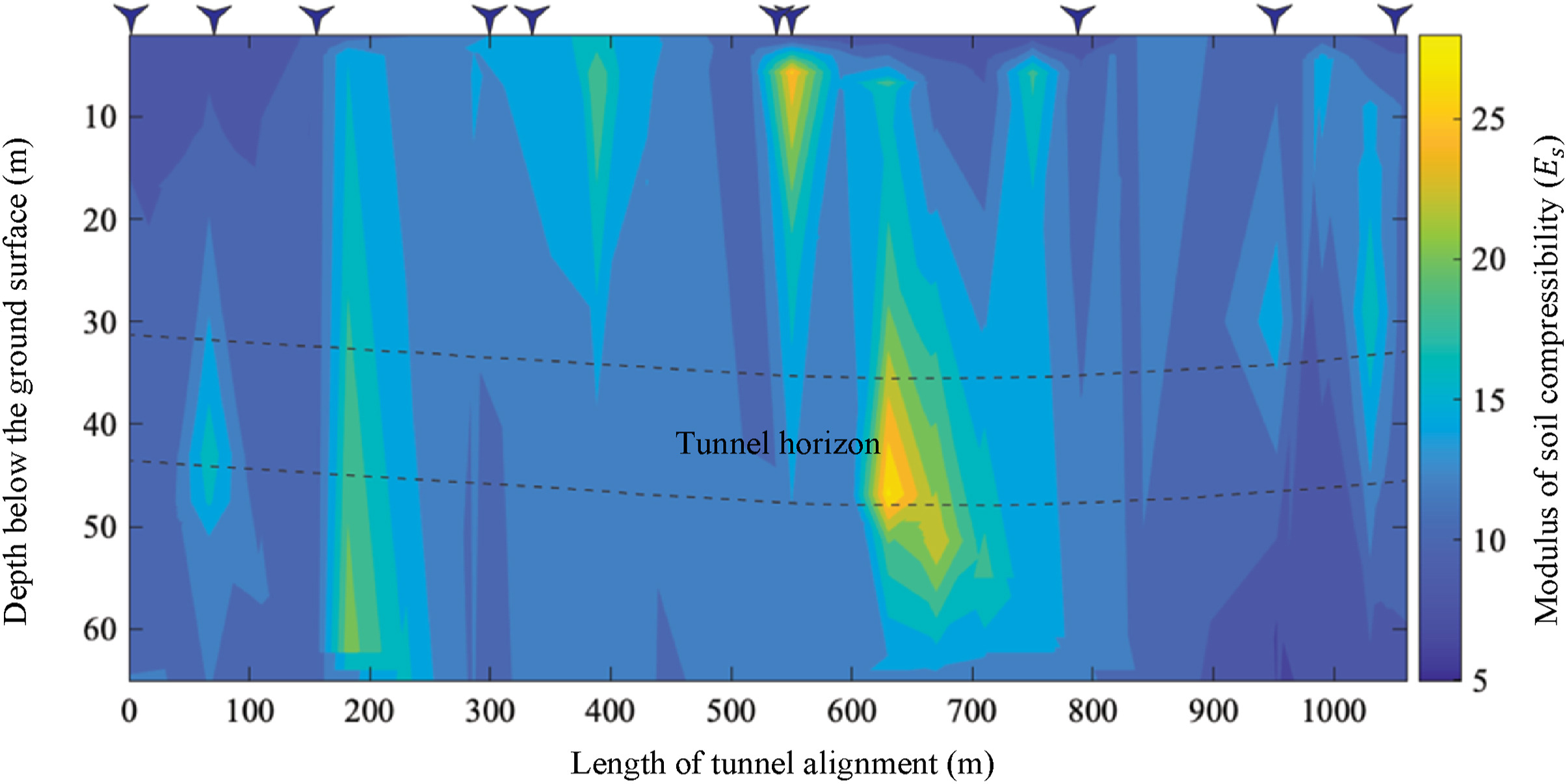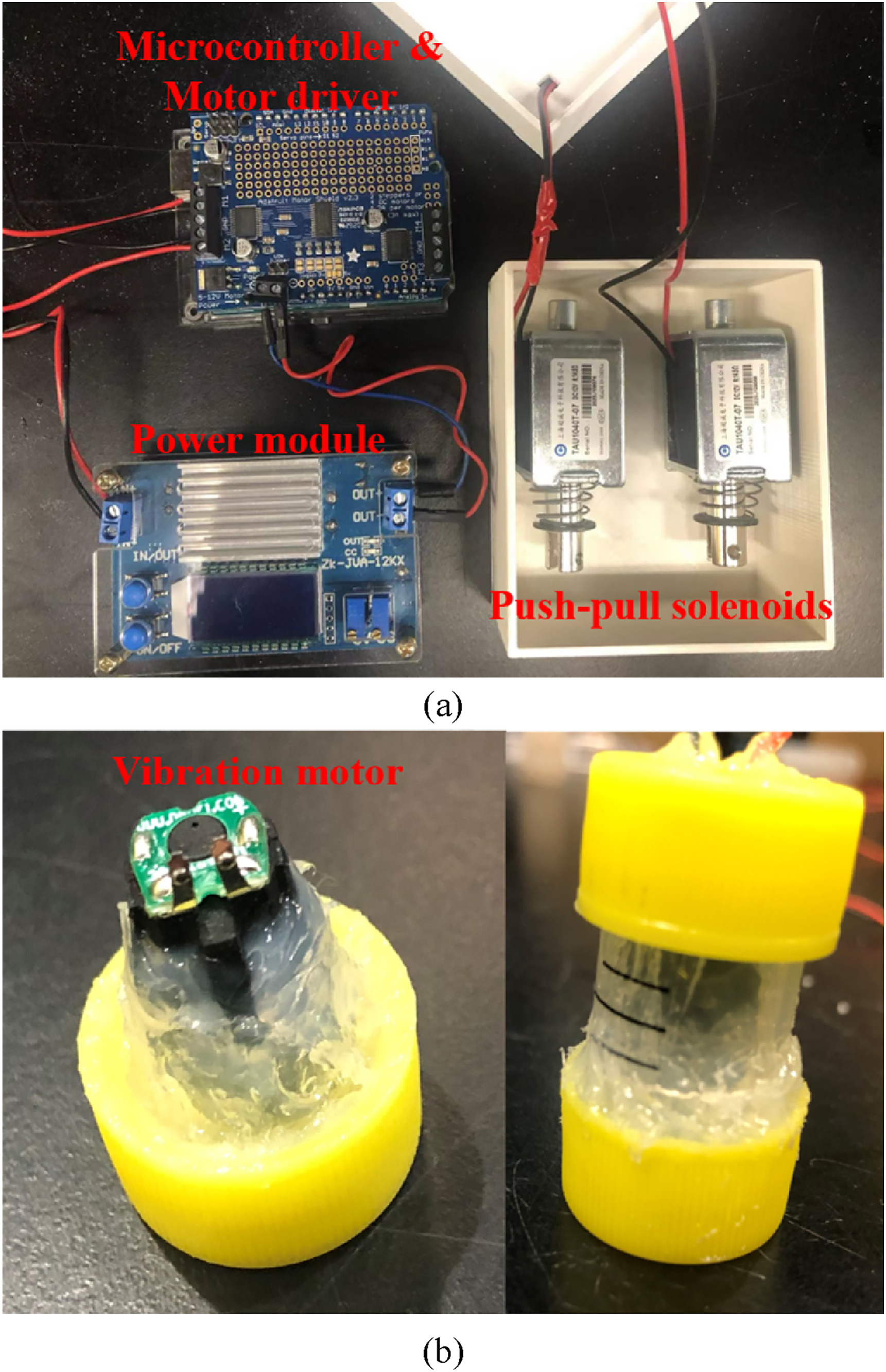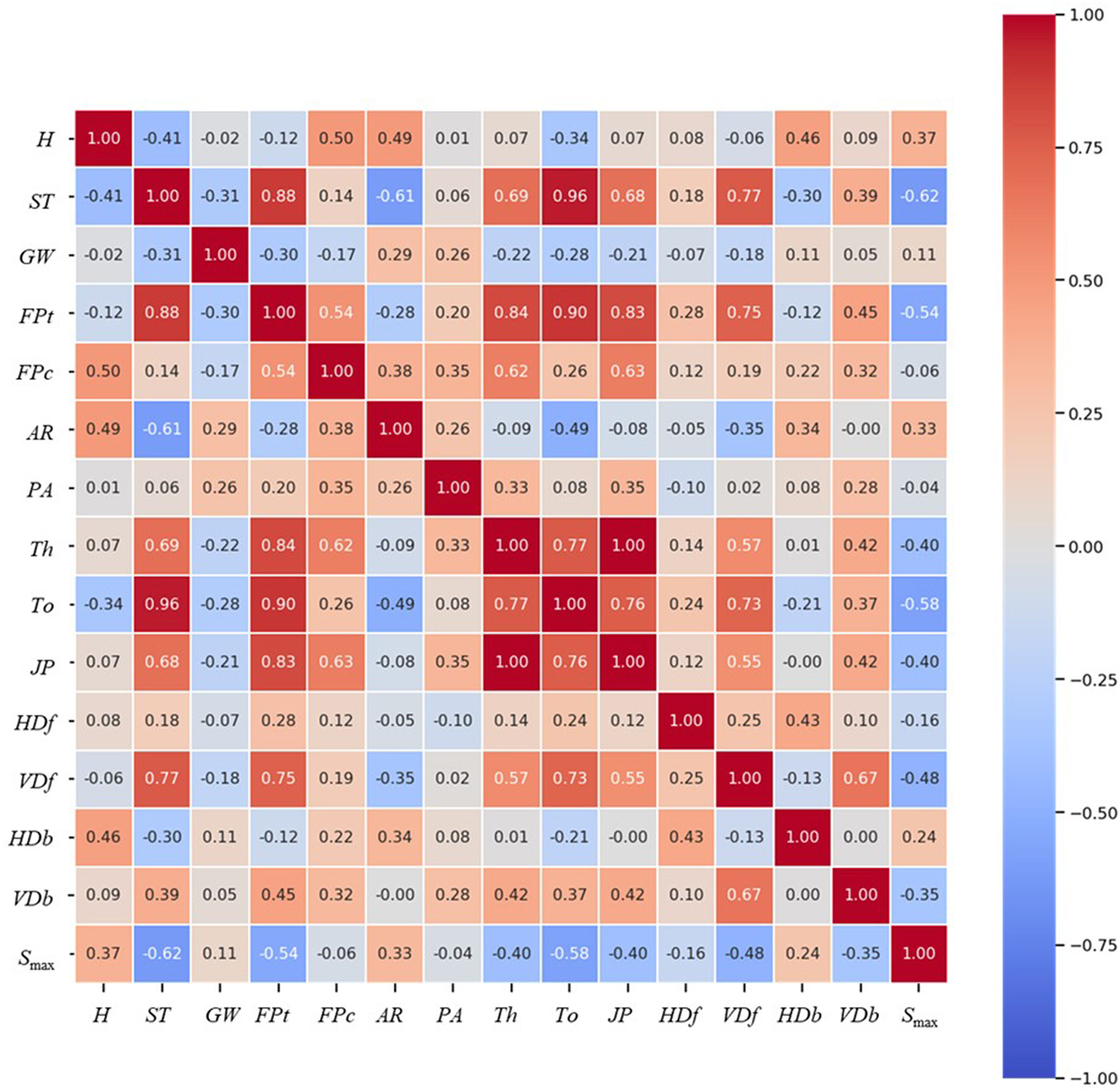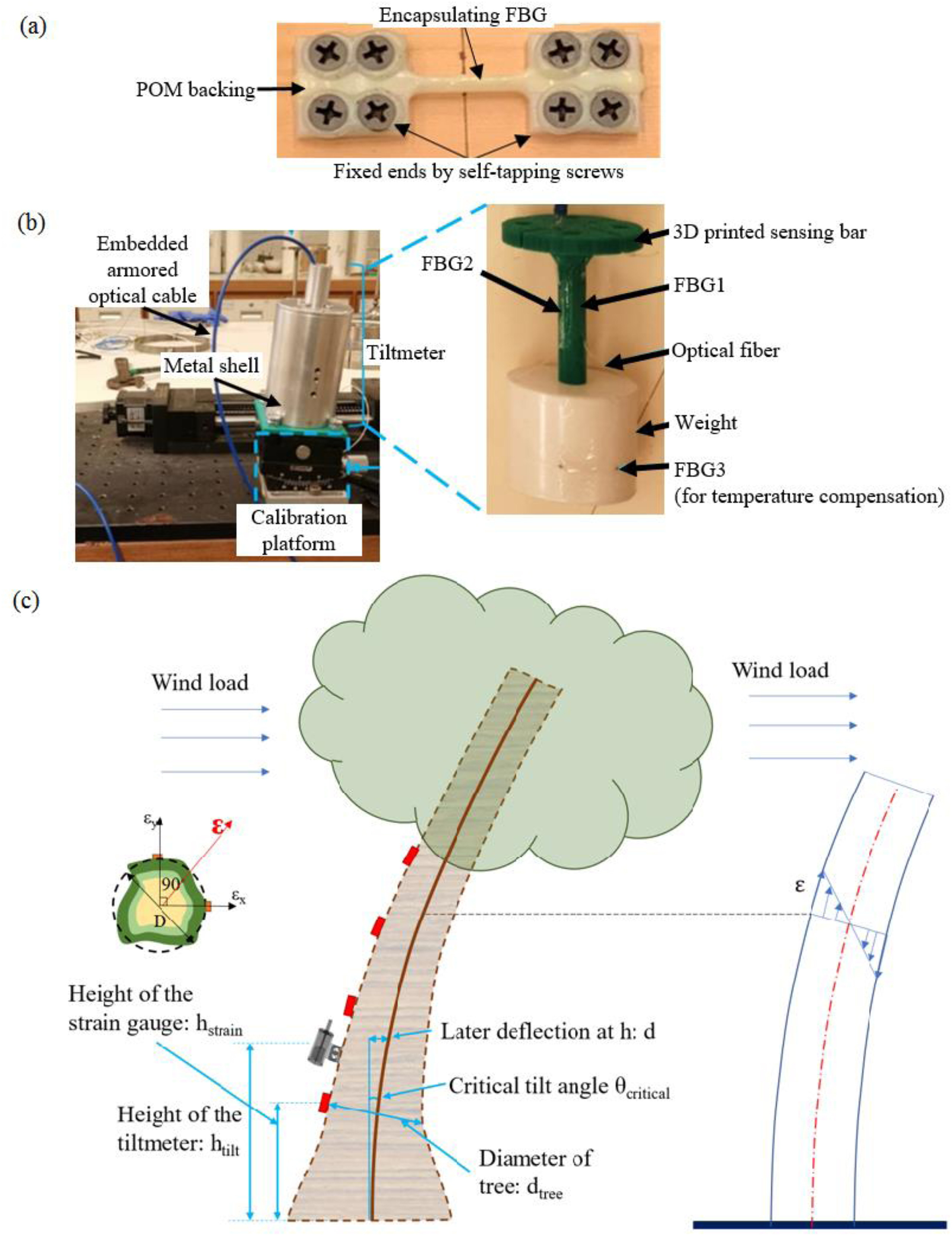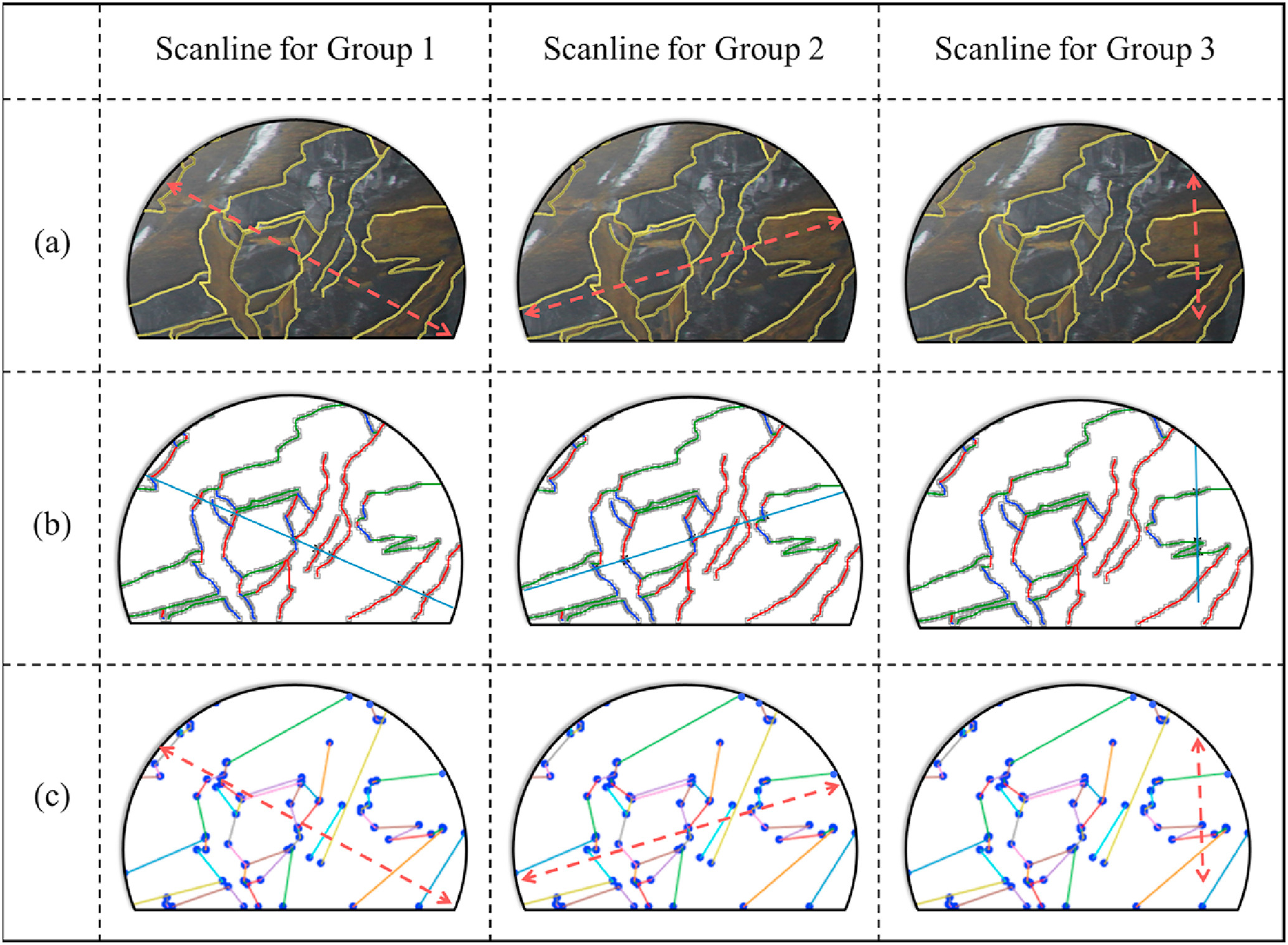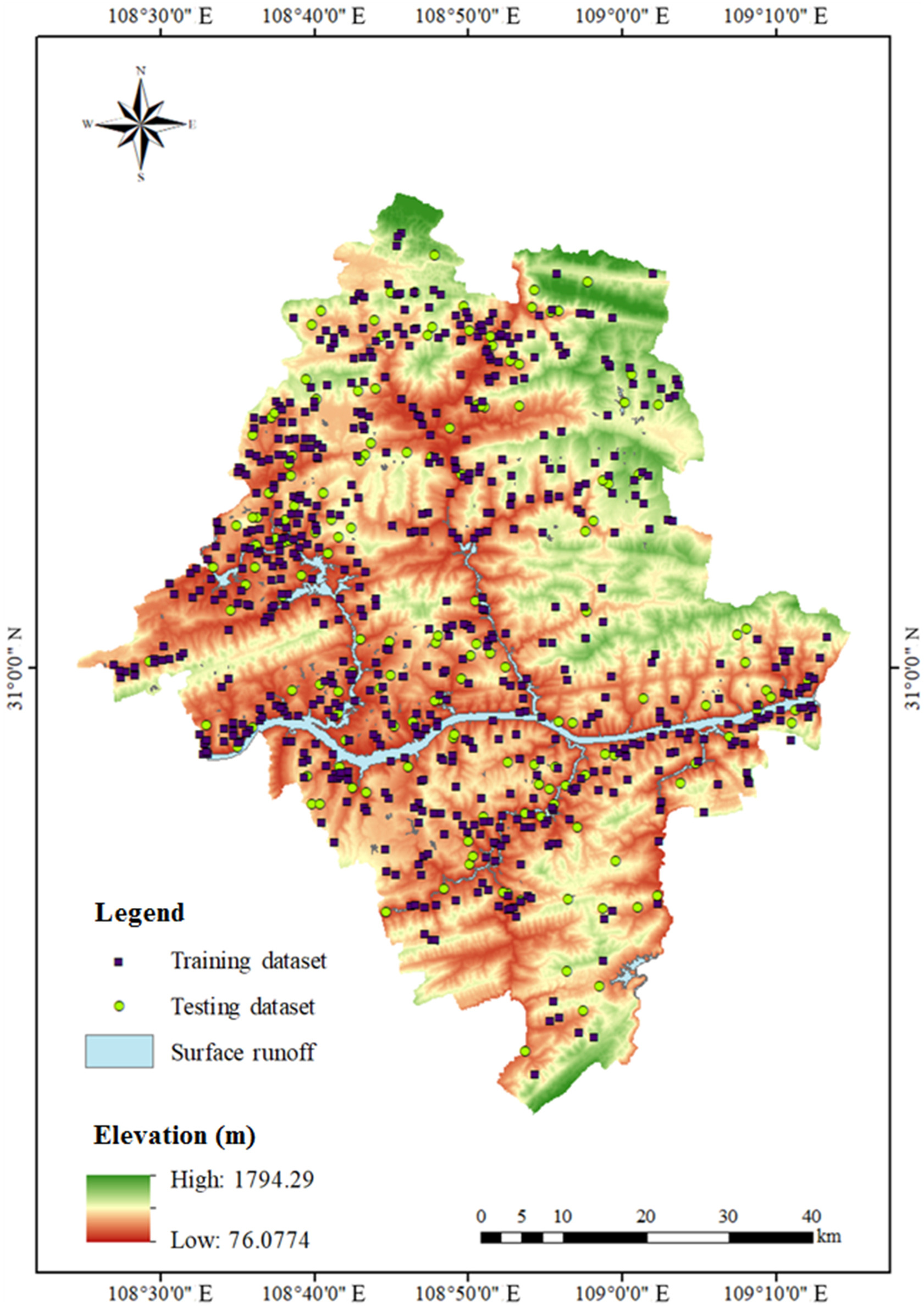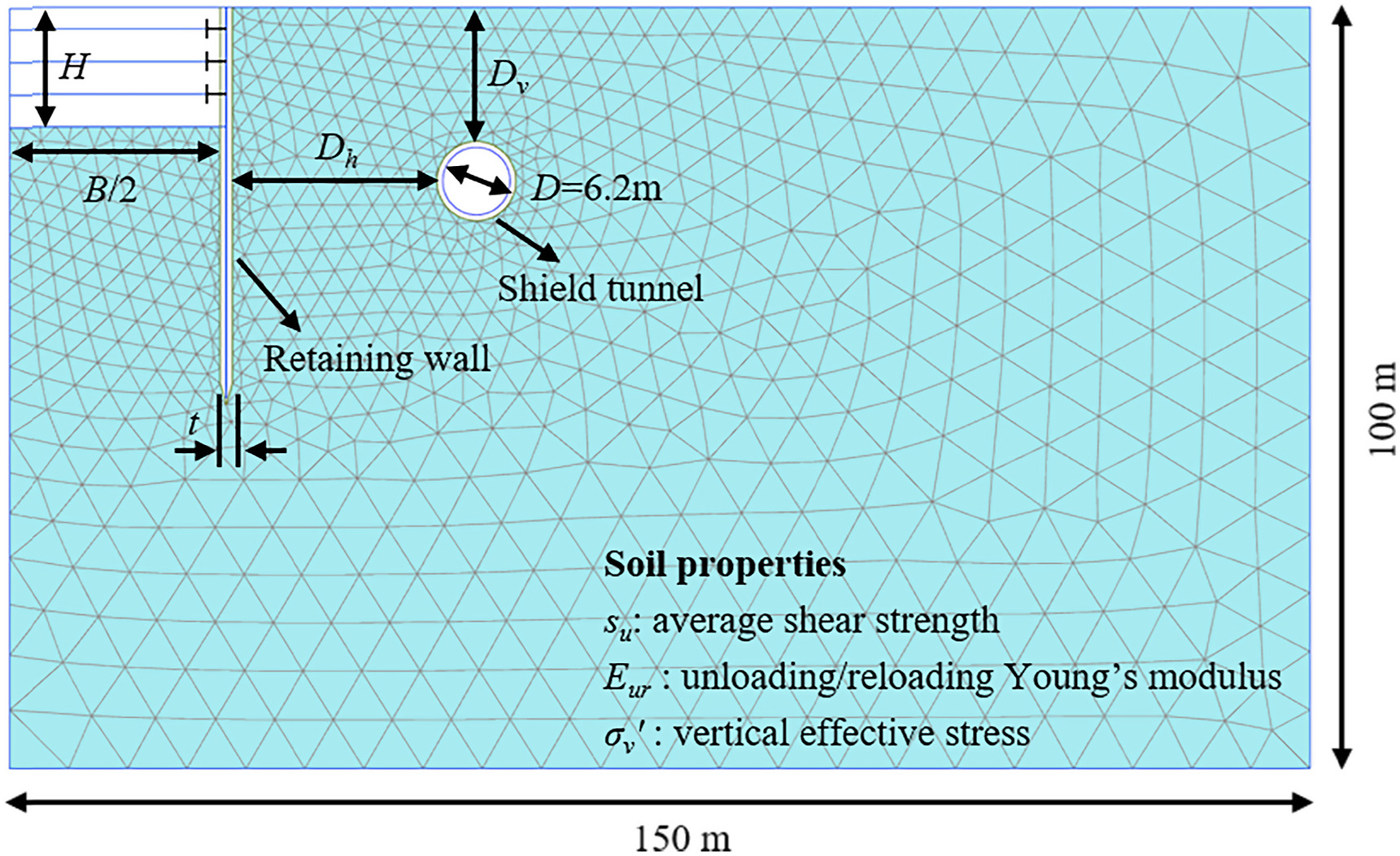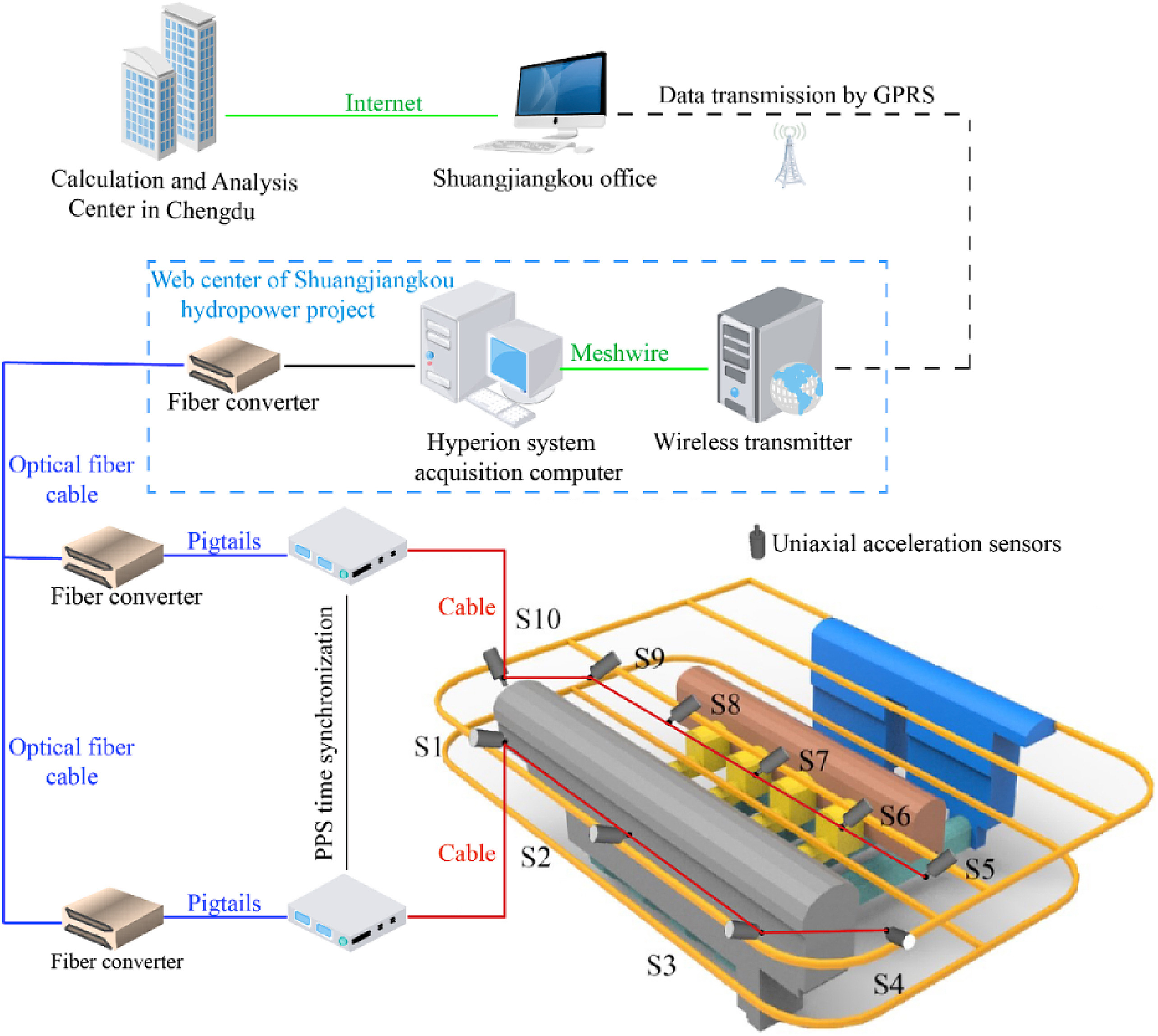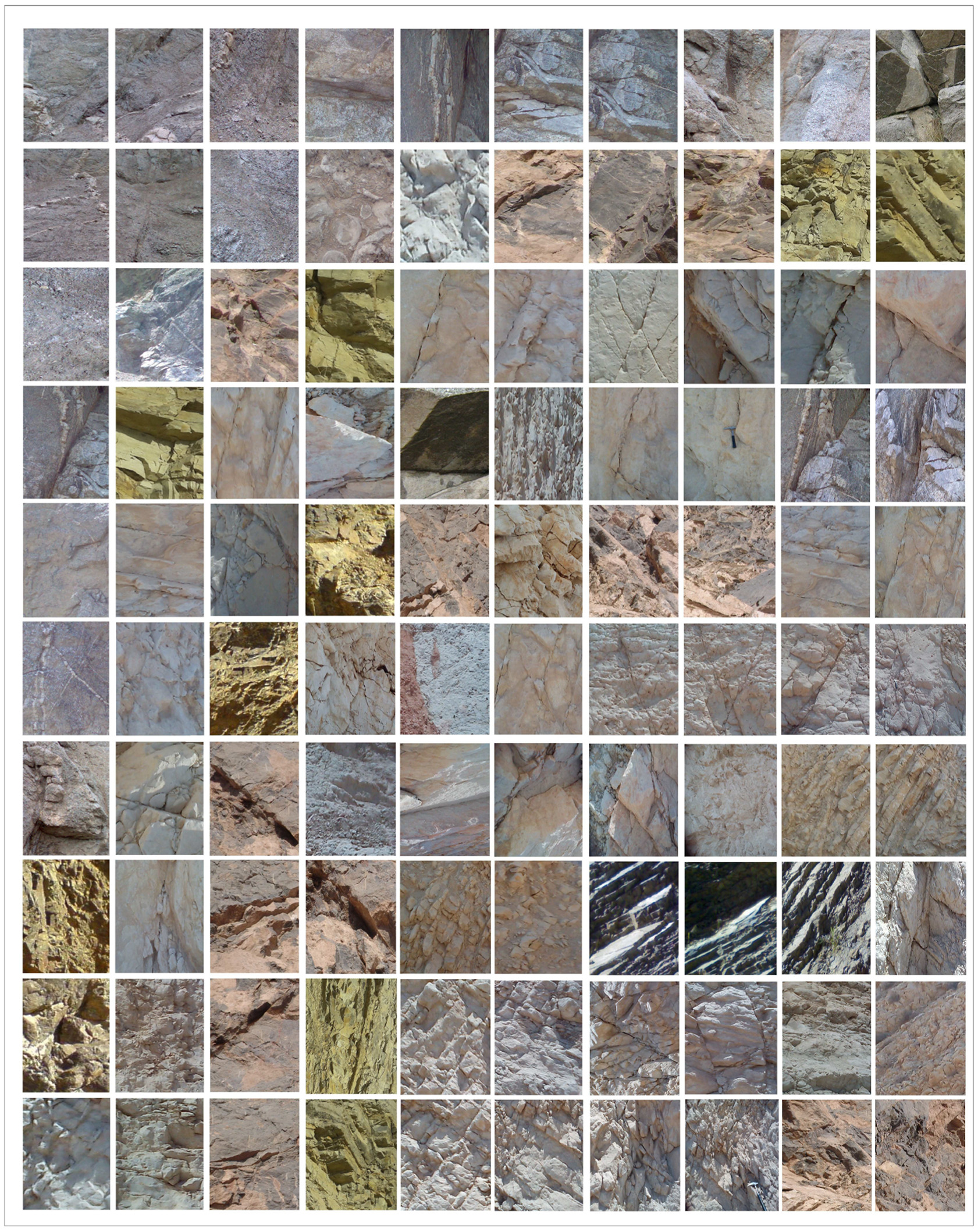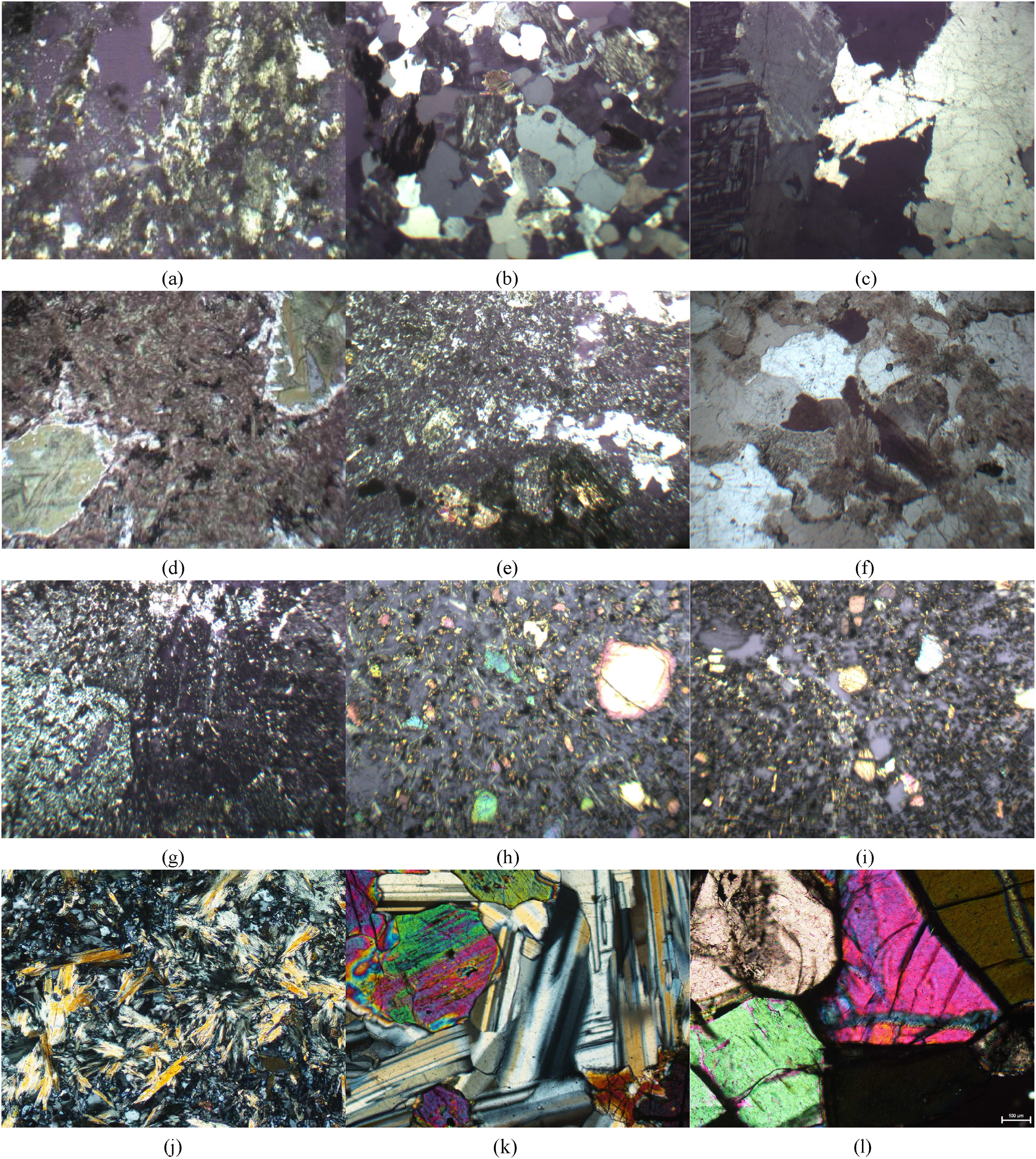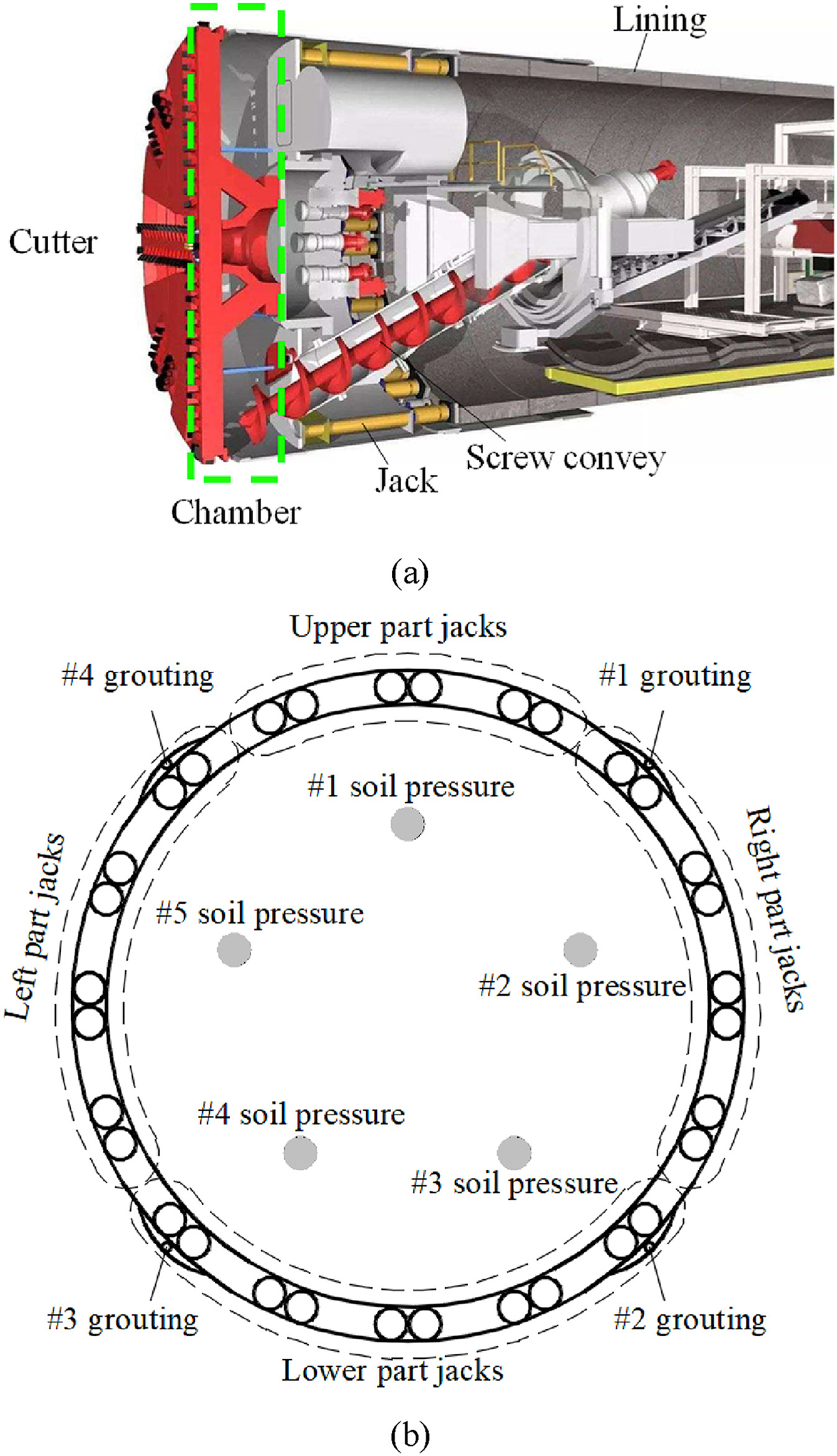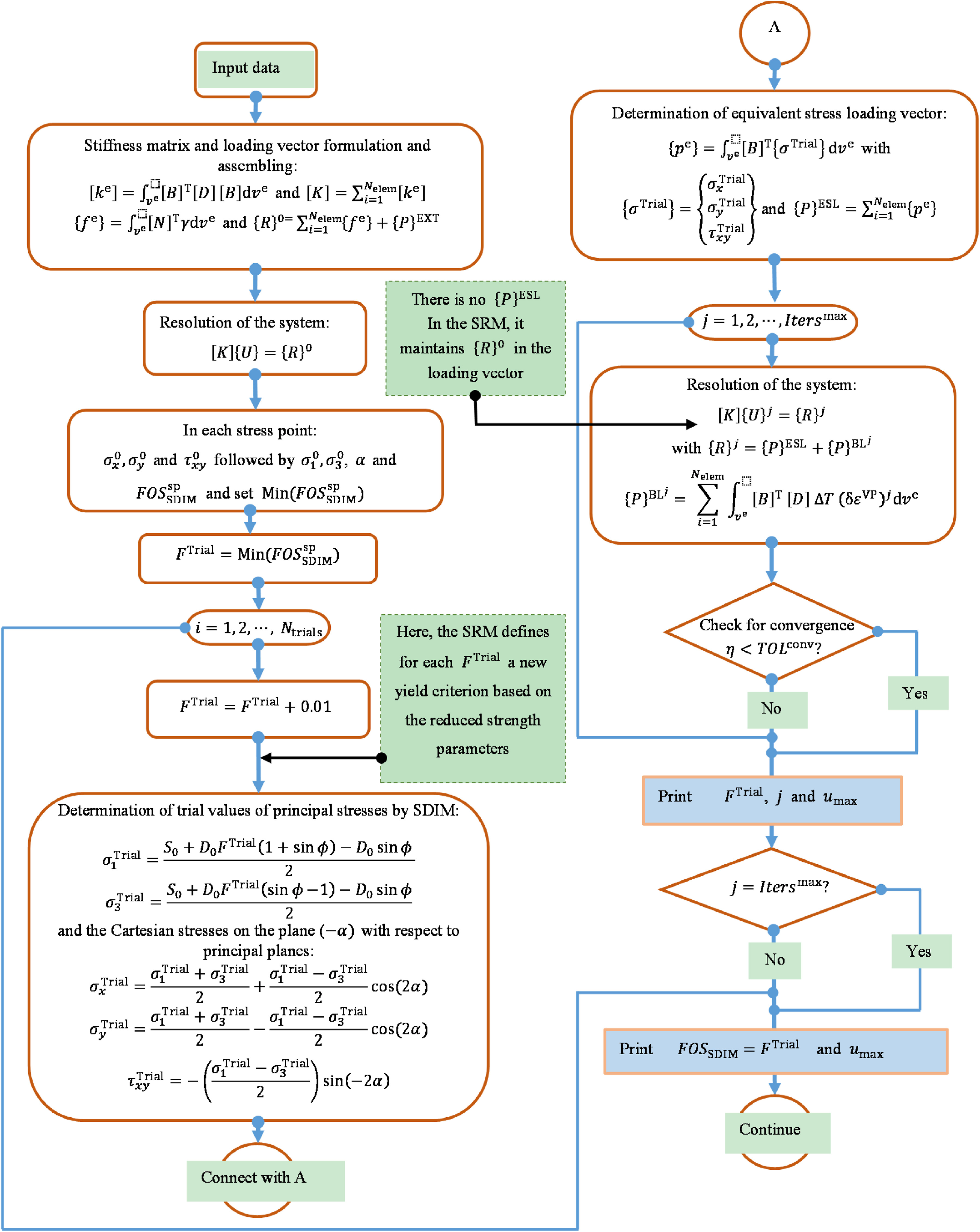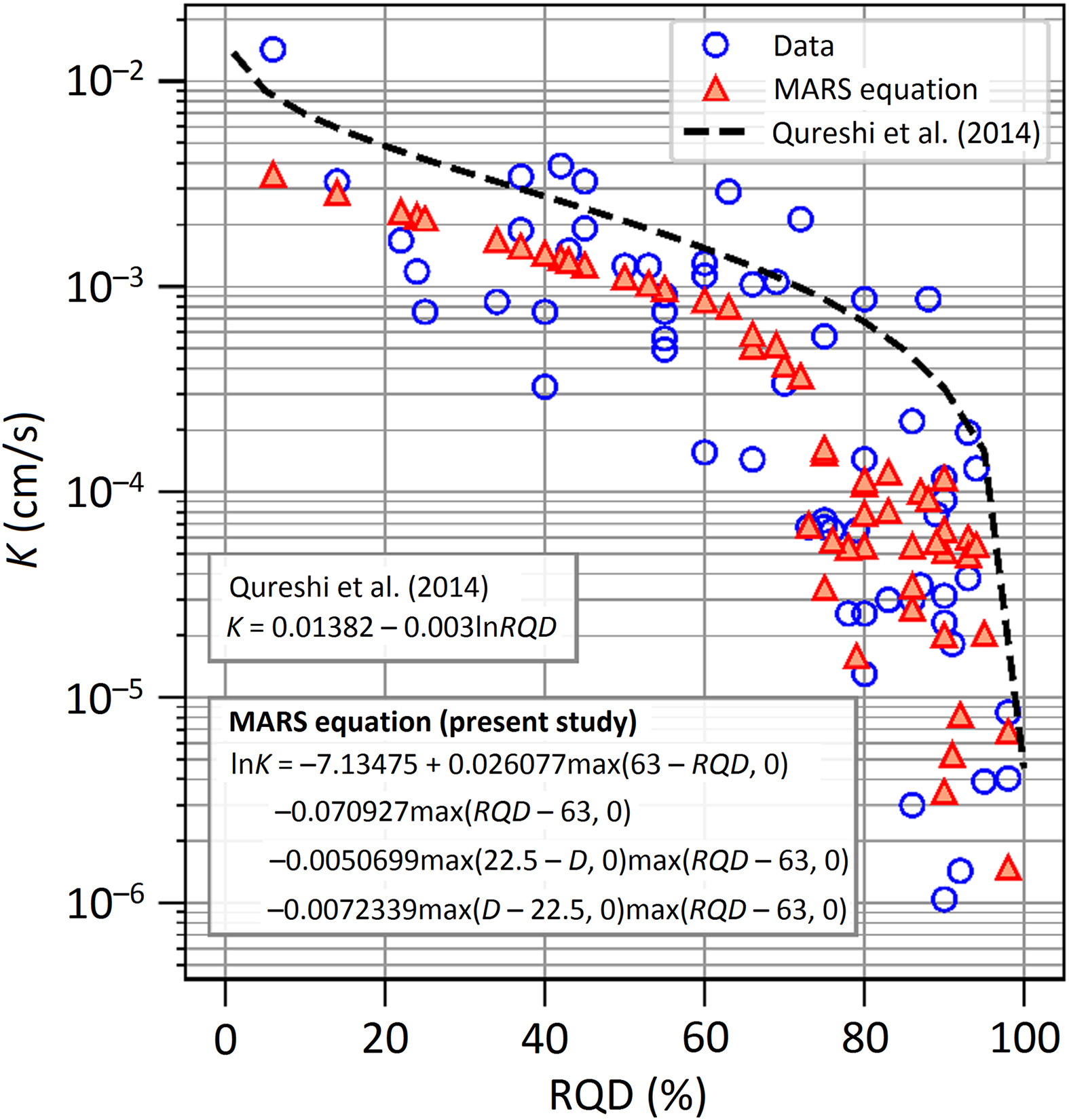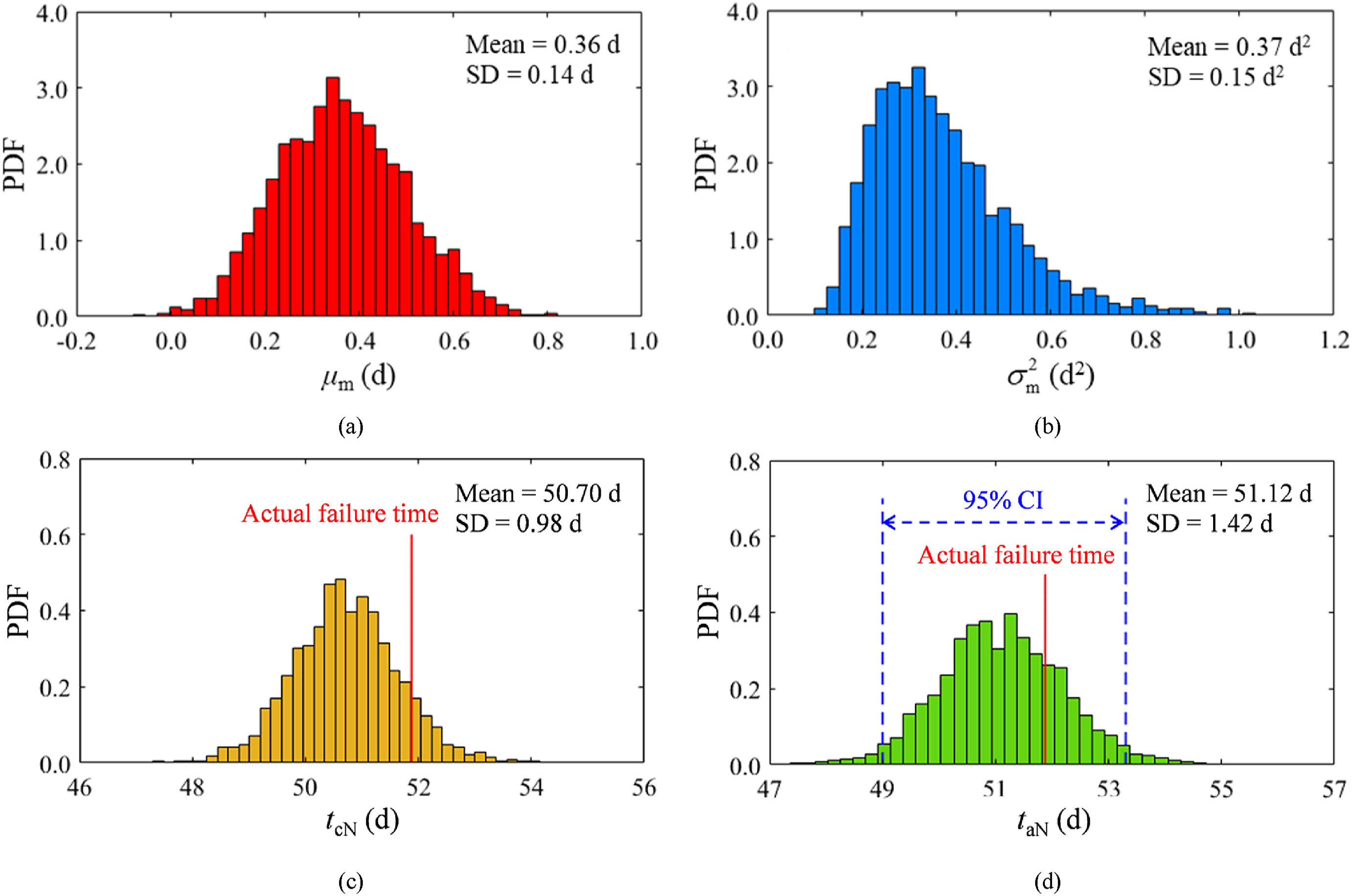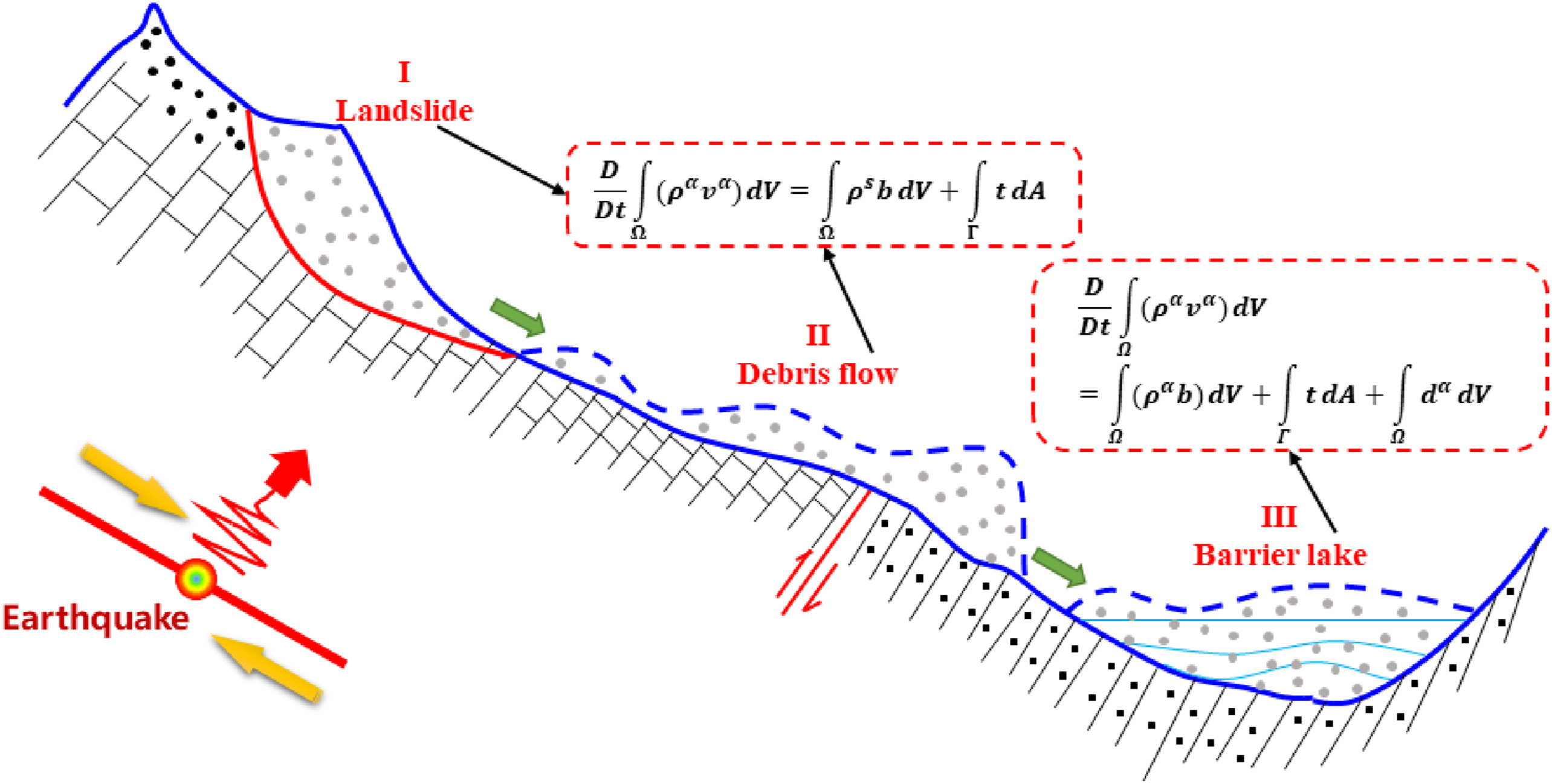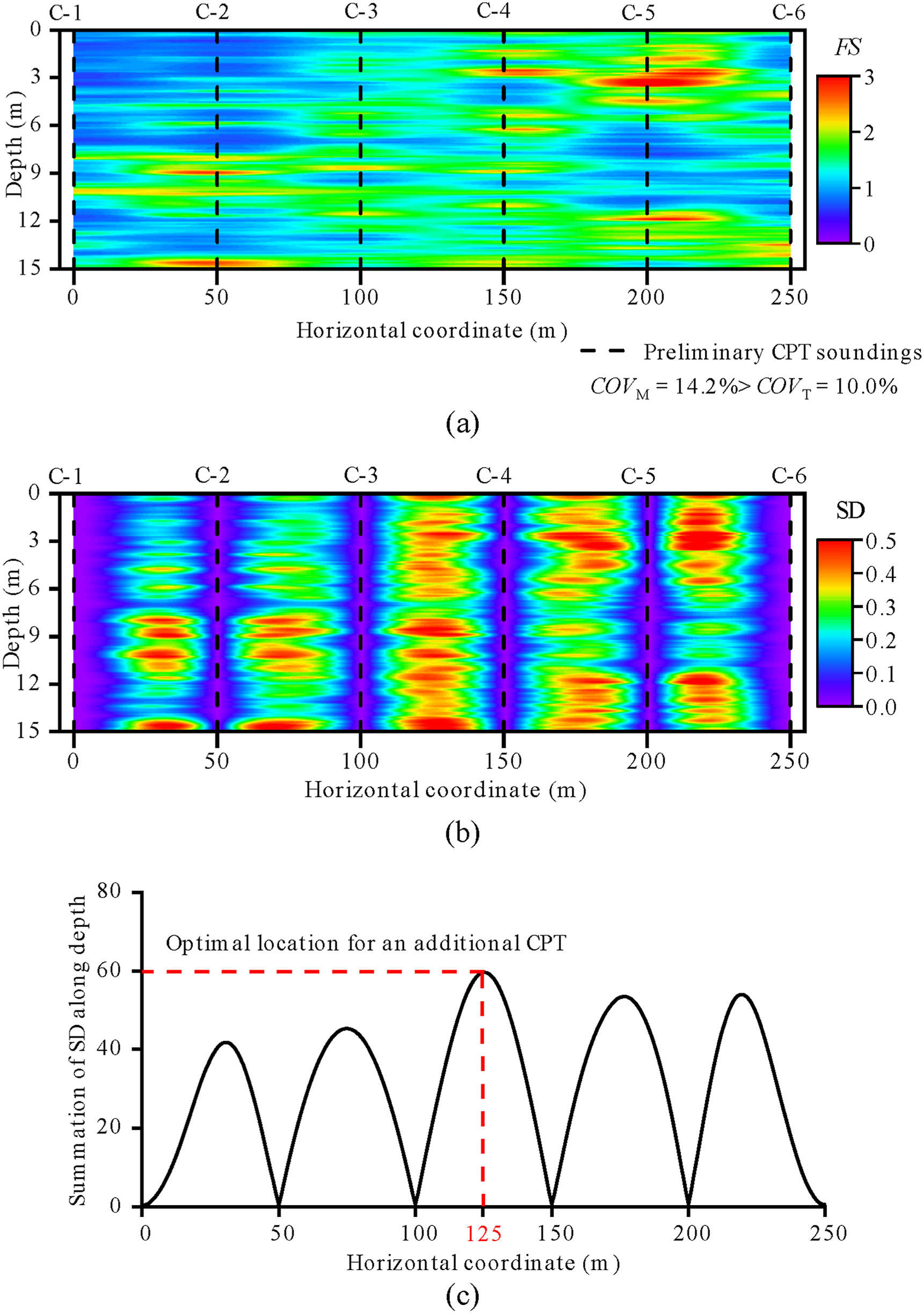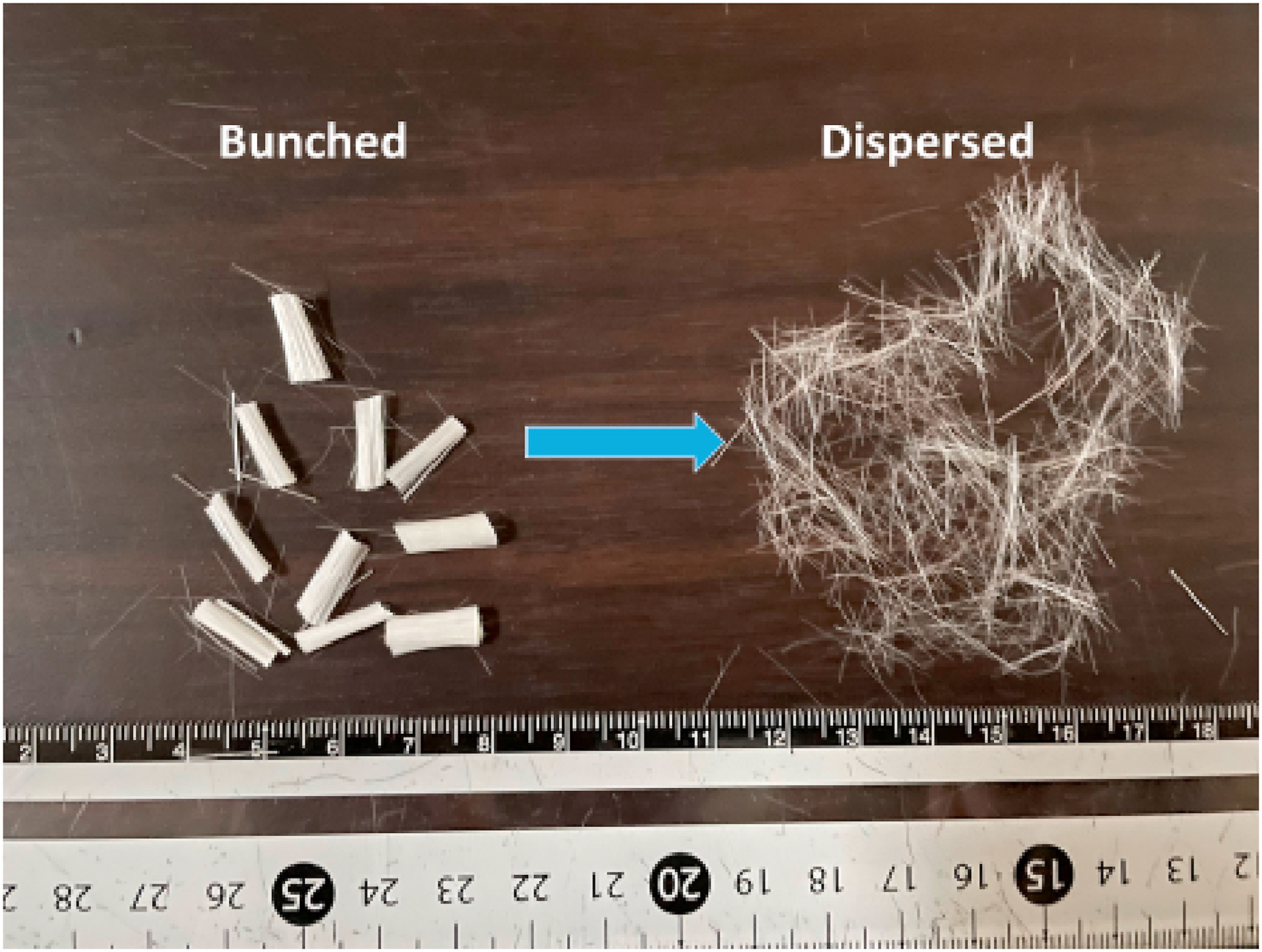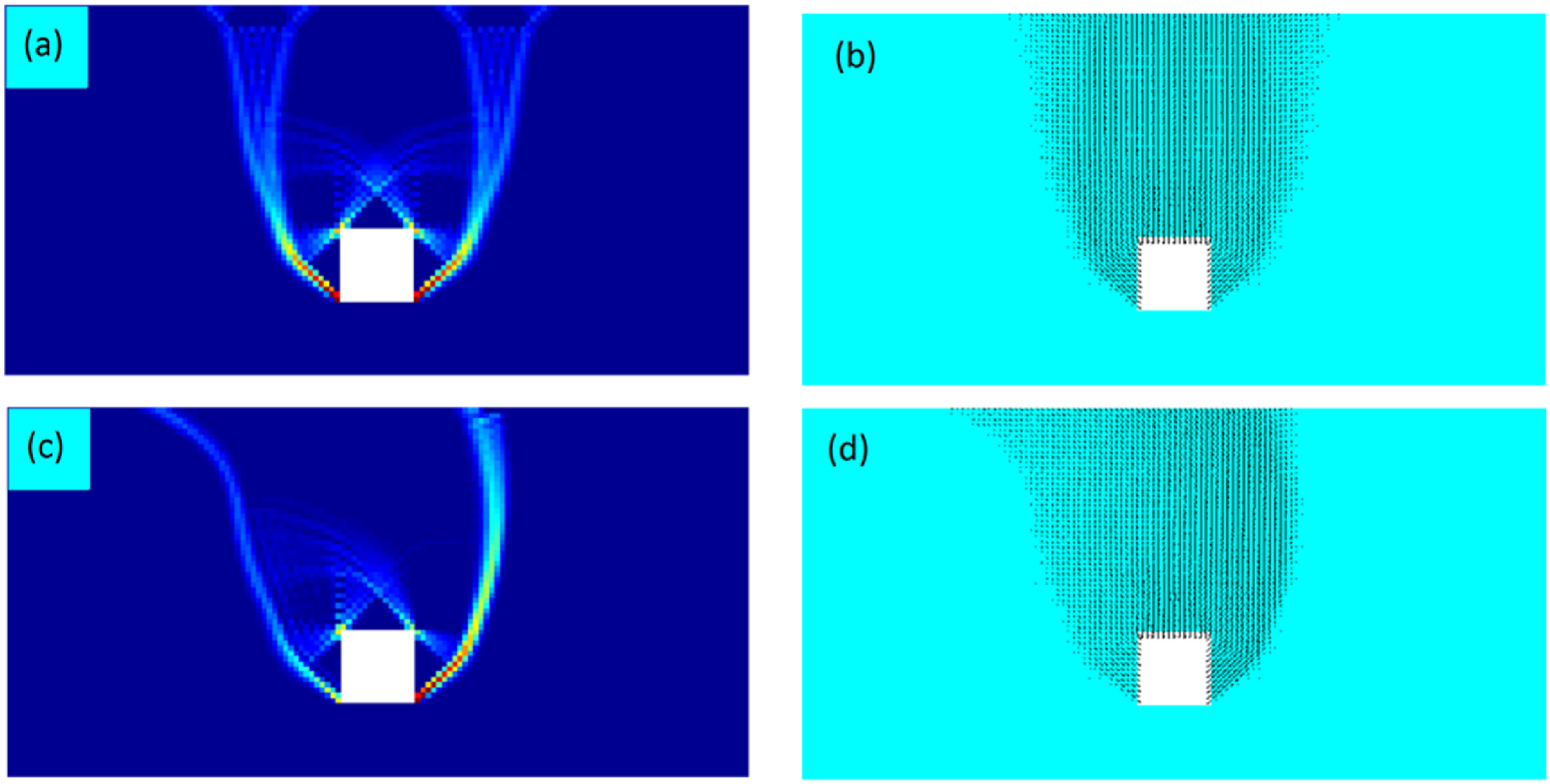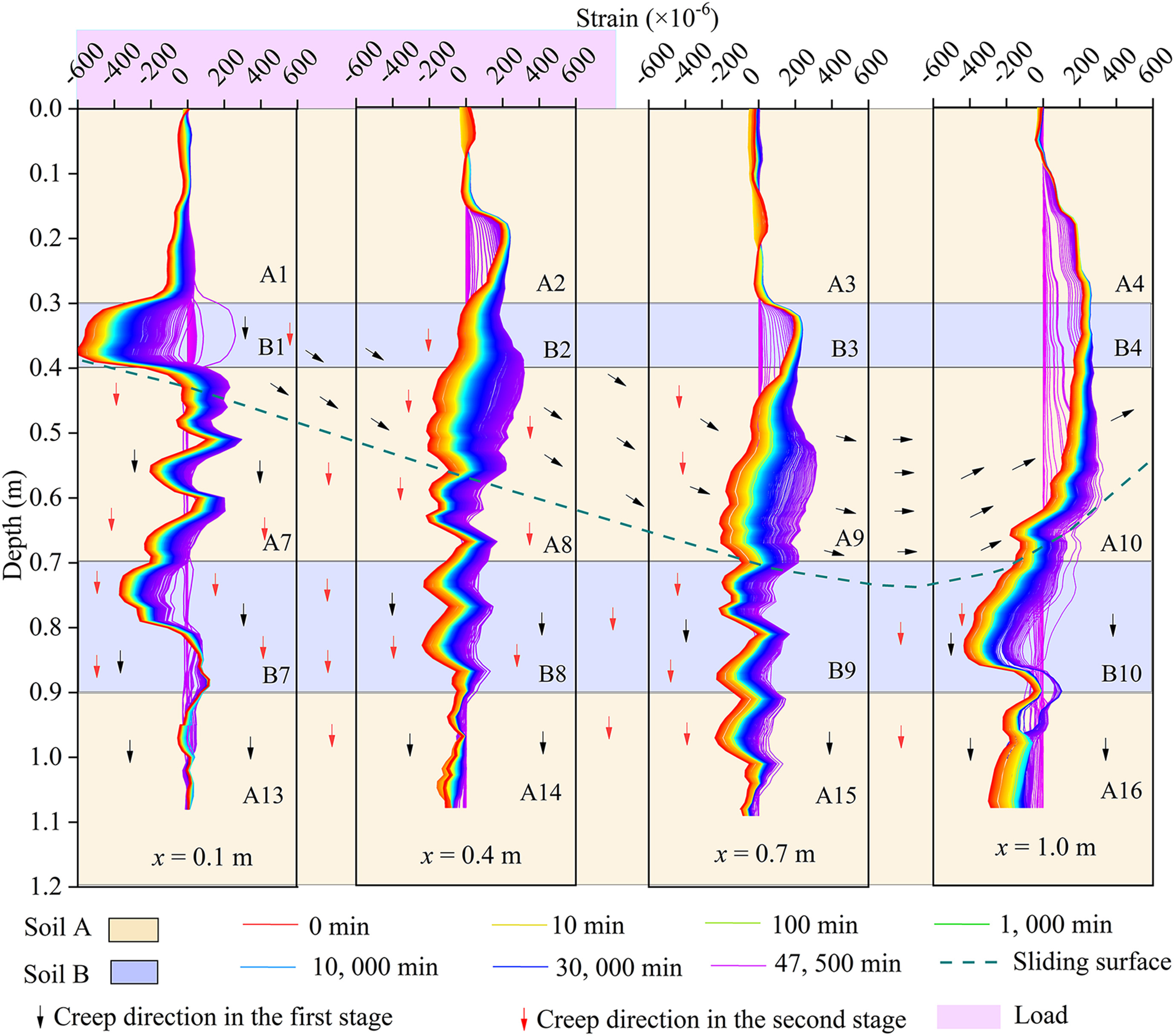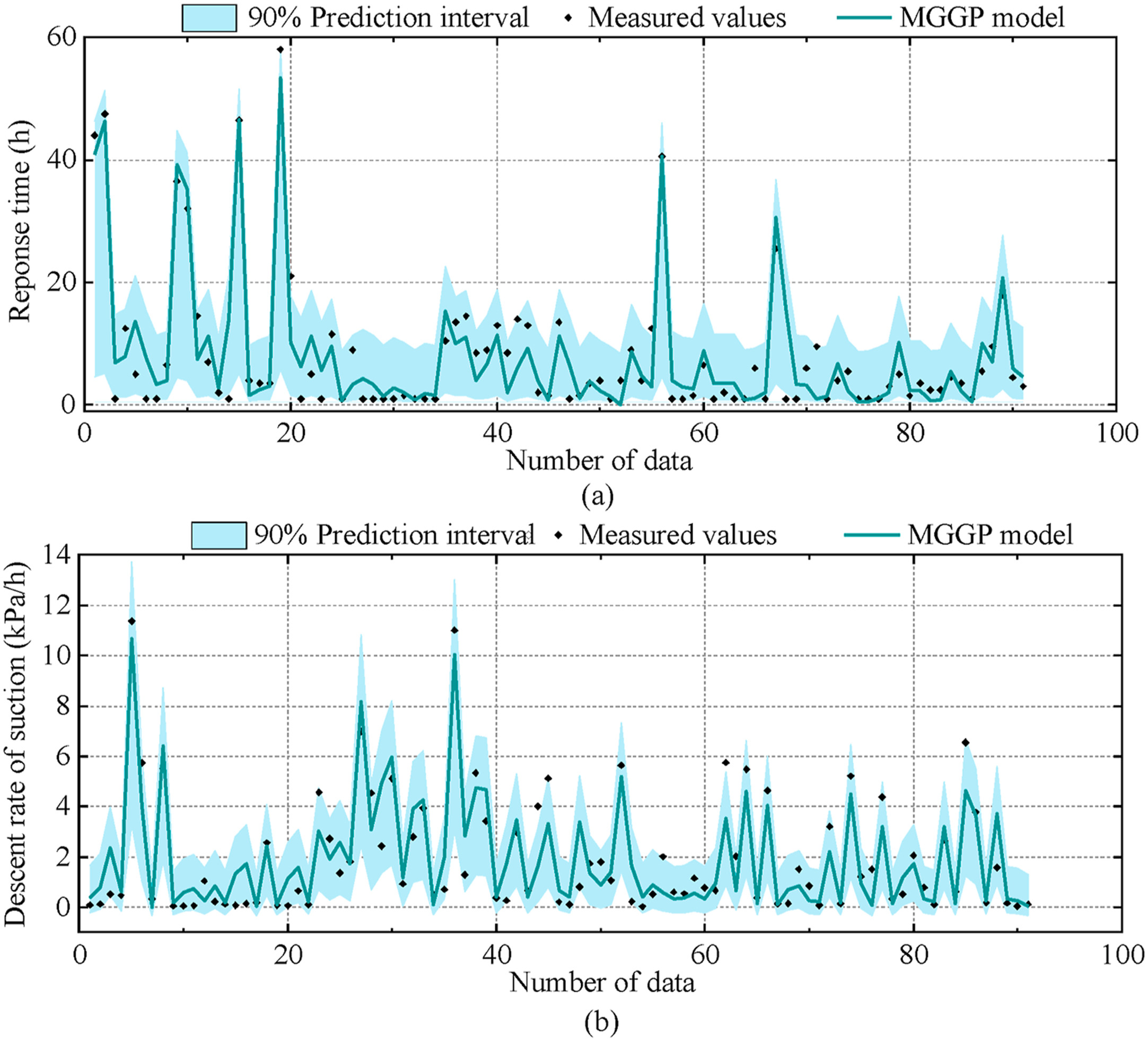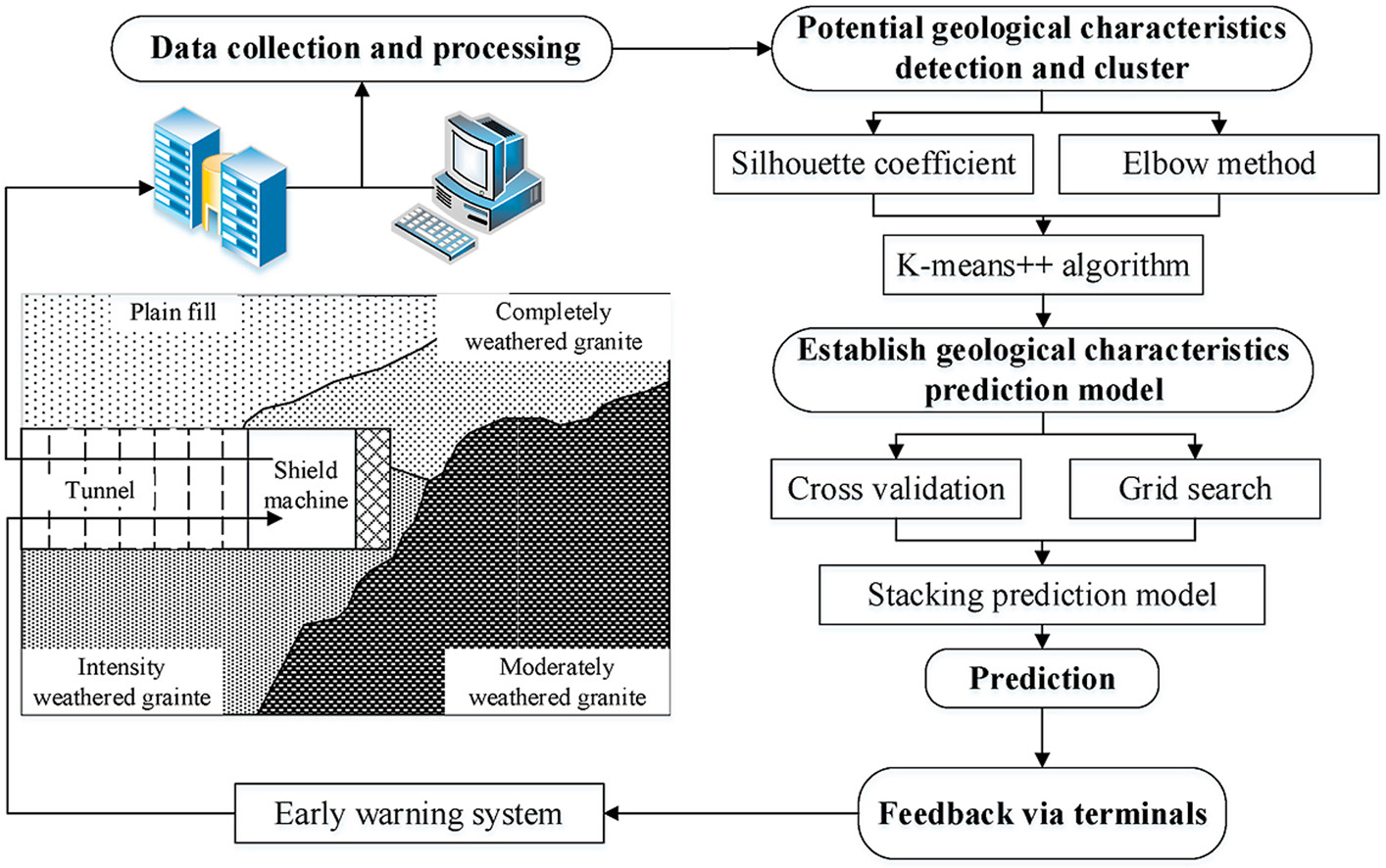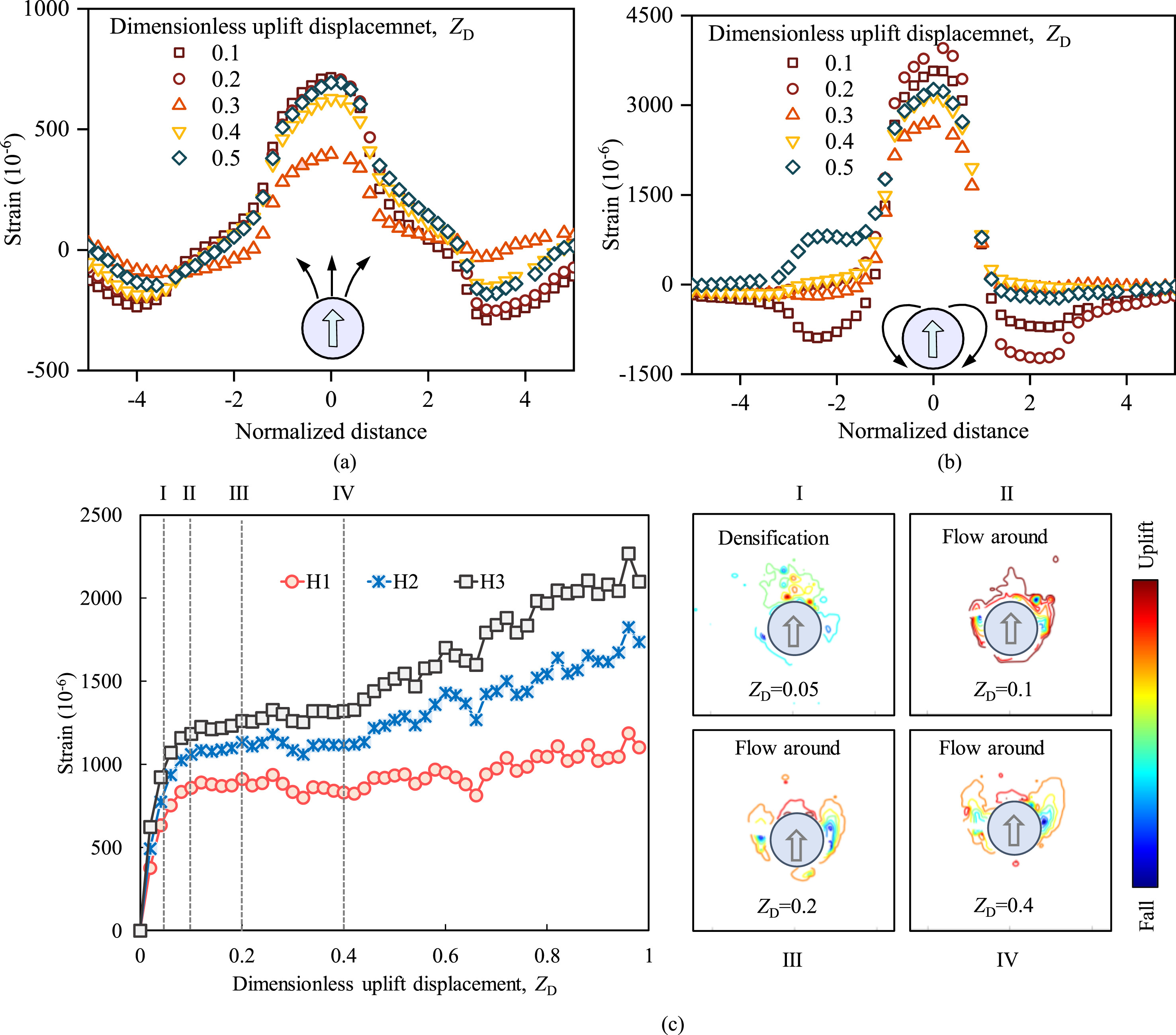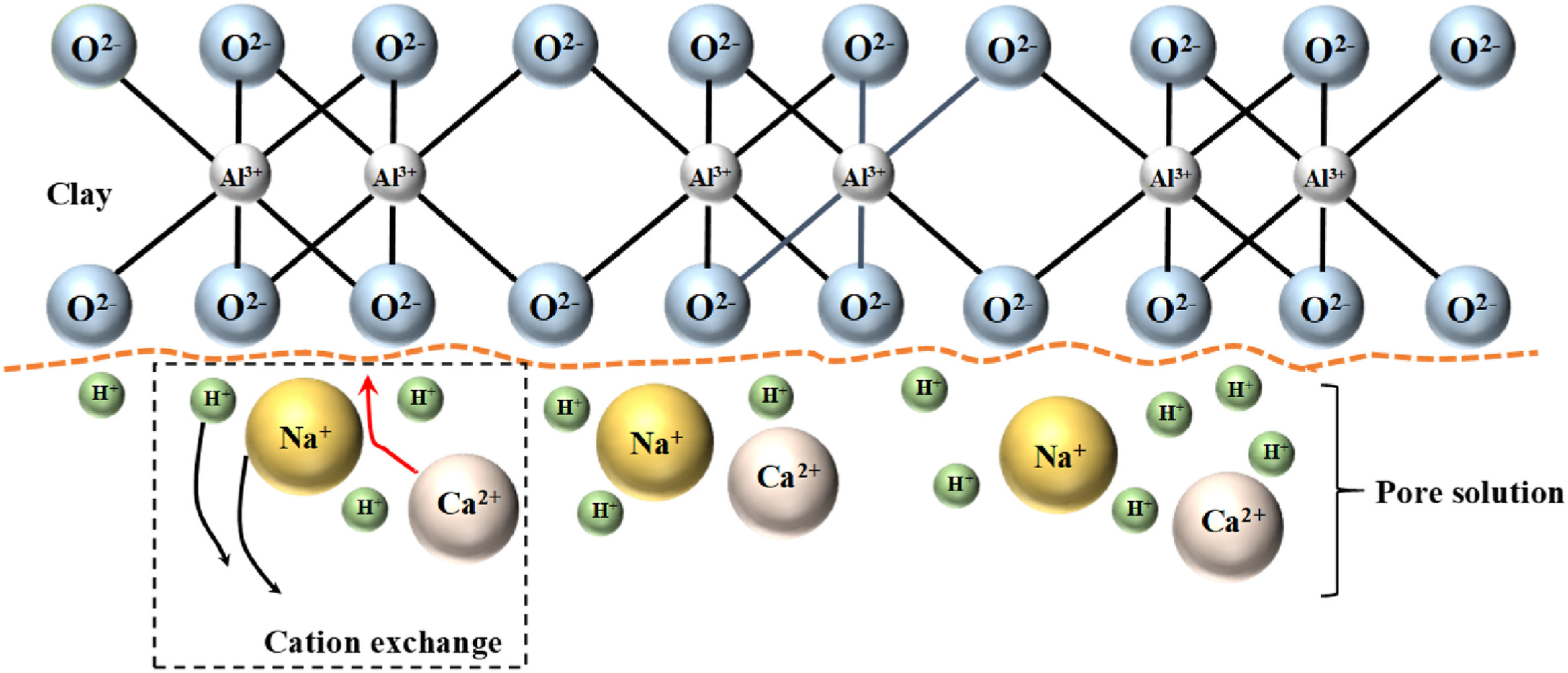-
Editorial for Internet of Things (IoT) and Artificial Intelligence (AI)
in geotechnical engineeringHonghu Zhu, Ankit Garg, Xiong (Bill) Yu, Hannah Wanhuan Zhou
2022, 14(4): 1025-1027. doi:10.1016/j.jrmge.2022.07.001
Abstract: [...]Read more. -
Effectiveness of predicting tunneling-induced ground settlements using machine learning methods with small datasets
Linan Liu, Wendy Zhou, Marte Gutierrez
2022, 14(4): 1028-1041. doi:10.1016/j.jrmge.2021.08.018
Abstract: Prediction of tunneling-induced ground settlements is an essential task, particularly for tunneling in urban settings. Ground settlements should be limited within a tolerable threshold to avoid damages to aboveground structures. Machine learning (ML) methods are becoming popular in many fields, including tunneling and underground excavations, as a powerful learning and predicting technique. However, the available datShow FiguresPrediction of tunneling-induced ground settlements is an essential task, particularly for tunneling in urban settings. Ground settlements should be limited within a tolerable threshold to avoid damages to aboveground structures. Machine learning (ML) methods are becoming popular in many fields, including tunneling and underground excavations, as a powerful learning and predicting technique. However, the available datasets collected from a tunneling project are usually small from the perspective of applying ML methods. Can ML algorithms effectively predict tunneling-induced ground settlements when the available datasets are small? In this study, seven ML methods are utilized to predict tunneling-induced ground settlement using 14 contributing factors measured before or during tunnel excavation. These methods include multiple linear regression (MLR), decision tree (DT), random forest (RF), gradient boosting (GB), support vector regression (SVR), back-propagation neural network (BPNN), and permutation importance-based BPNN (PI-BPNN) models. All methods except BPNN and PI-BPNN are shallow-structure ML methods. The effectiveness of these seven ML approaches on small datasets is evaluated using model accuracy and stability. The model accuracy is measured by the coefficient of determination (R2) of training and testing datasets, and the stability of a learning algorithm indicates robust predictive performance. Also, the quantile error (QE) criterion is introduced to assess model predictive performance considering underpredictions and overpredictions. Our study reveals that the RF algorithm outperforms all the other models with the highest model prediction accuracy (0.9) and stability (3.02 × 10−27). Deep-structure ML models do not perform well for small datasets with relatively low model accuracy (0.59) and stability (5.76). The PI-BPNN architecture is proposed and designed for small datasets, showing better performance than typical BPNN. Six important contributing factors of ground settlements are identified, including tunnel depth, the distance between tunnel face and surface monitoring points (DTM), weighted average soil compressibility modulus (ACM), grouting pressure, penetrating rate and thrust force.
[...]Read more. -
Bio-inspired vibrational wireless underground communication system
Yi Zhong, Junliang (Julian) Tao
2022, 14(4): 1042-1051. doi:10.1016/j.jrmge.2022.06.005
Abstract: The internet of the underground things (IoUT) is an emerging field that concerns connected underground sensing nodes and can find applications in various fields such as geotechnical engineering, precision agriculture, and search and rescue operations. The complex underground environment and multiphase nature of the soil pose challenges to wireless underground communication. Most existing studies on wireless undergrouShow FiguresThe internet of the underground things (IoUT) is an emerging field that concerns connected underground sensing nodes and can find applications in various fields such as geotechnical engineering, precision agriculture, and search and rescue operations. The complex underground environment and multiphase nature of the soil pose challenges to wireless underground communication. Most existing studies on wireless underground communication focus on the use of electromagnetic waves. However, as a highly lossy material for electromagnetic waves, soil can limit the range and reliability of data transmission. Inspired by subterranean animals that rely on vibrations or seismic waves for underground communication, the prototype system developed in this study is based on vibration. This system includes a bio-inspired vibrating source, a micro-electromechanical system (MEMS) accelerometer, a micro-controller, and a set of algorithms for encoding and decoding information. Specifically, the mole rats-inspired source is small in size, low in cost, and energy-efficient. An on-off-keying decoding algorithm enhanced with an error-correction algorithm is found to be robust in transmitting textual and imaginary information. With the current design, a maximum transmission bit rate of 16–17 bits per second and a transmission distance of 80 cm can be achieved. The bit error ratio is as low as 0.1%, demonstrating the robustness of the algorithms. The performance of the developed system shows that seismic waves produced by vibration can be used as an information carrier and can potentially be implemented in the IoUT.
[...]Read more. -
Investigation of feature contribution to shield tunneling-induced settlement using Shapley additive explanations method
K.K. Pabodha M. Kannangara, Wanhuan Zhou, Zhi Ding, Zhehao Hong
2022, 14(4): 1052-1063. doi:10.1016/j.jrmge.2022.01.002
Abstract: Accurate prediction of shield tunneling-induced settlement is a complex problem that requires consideration of many influential parameters. Recent studies reveal that machine learning (ML) algorithms can predict the settlement caused by tunneling. However, well-performing ML models are usually less interpretable. Irrelevant input features decrease the performance and interpretability of an ML model. Nonetheless, featShow FiguresAccurate prediction of shield tunneling-induced settlement is a complex problem that requires consideration of many influential parameters. Recent studies reveal that machine learning (ML) algorithms can predict the settlement caused by tunneling. However, well-performing ML models are usually less interpretable. Irrelevant input features decrease the performance and interpretability of an ML model. Nonetheless, feature selection, a critical step in the ML pipeline, is usually ignored in most studies that focused on predicting tunneling-induced settlement. This study applies four techniques, i.e. Pearson correlation method, sequential forward selection (SFS), sequential backward selection (SBS) and Boruta algorithm, to investigate the effect of feature selection on the model's performance when predicting the tunneling-induced maximum surface settlement (Smax). The data set used in this study was compiled from two metro tunnel projects excavated in Hangzhou, China using earth pressure balance (EPB) shields and consists of 14 input features and a single output (i.e. Smax). The ML model that is trained on features selected from the Boruta algorithm demonstrates the best performance in both the training and testing phases. The relevant features chosen from the Boruta algorithm further indicate that tunneling-induced settlement is affected by parameters related to tunnel geometry, geological conditions and shield operation. The recently proposed Shapley additive explanations (SHAP) method explores how the input features contribute to the output of a complex ML model. It is observed that the larger settlements are induced during shield tunneling in silty clay. Moreover, the SHAP analysis reveals that the low magnitudes of face pressure at the top of the shield increase the model's output.
[...]Read more. -
Development of a monitoring and warning system based on optical fiber sensing technology for masonry retaining walls and trees
Peichen Wu, Daoyuan Tan, Shaoqun Lin, Wenbo Chen, Jianhua Yin, Numan Malik, An Li
2022, 14(4): 1064-1076. doi:10.1016/j.jrmge.2021.09.013
Abstract: Hong Kong has a long history of applying masonry retaining walls to provide horizontal platforms and stabilize man-made slopes. Due to the sub-tropical climate, some masonry retaining walls are colonized by trees. Extreme weather, such as typhoons and heavy rains, may cause rupture or root failure of those trees, thus resulting in instability of the retaining walls. A monitoring and warning system for the movement ofShow FiguresHong Kong has a long history of applying masonry retaining walls to provide horizontal platforms and stabilize man-made slopes. Due to the sub-tropical climate, some masonry retaining walls are colonized by trees. Extreme weather, such as typhoons and heavy rains, may cause rupture or root failure of those trees, thus resulting in instability of the retaining walls. A monitoring and warning system for the movement of masonry retaining walls and sway of trees has been designed with the application of fiber Bragg grating (FBG) sensing technology. The monitoring system is also equipped with a solar power system and 4G data transmission devices. The key functions of the proposed monitoring system include remote sensing and data access, early warning, and real-time data visualization. The setups and working principles of the monitoring systems and related transducers are introduced. The feasibility, accuracy, serviceability and reliability of this monitoring system have been checked by in-site calibration tests and four-month monitoring. Besides, a two-level interface has been developed for data visualization. The monitoring results show that the monitored masonry retaining wall had a reversible movement up to 2.5 mm during the monitoring period. Besides, it is found that the locations of the maximum strain on trees depend on the crown spread of trees.
[...]Read more. -
A novel image-based approach for interactive characterization of rock fracture spacing in a tunnel face
Jiayao Chen, Yifeng Chen, Anthony G. Cohn, Hongwei Huang, Jianhong Man, Lijun Wei
2022, 14(4): 1077-1088. doi:10.1016/j.jrmge.2021.10.012
Abstract: This paper presents a novel integrated method for interactive characterization of fracture spacing in rock tunnel sections. The main procedure includes four steps: (1) Automatic extraction of fracture traces, (2) digitization of trace maps, (3) disconnection and grouping of traces, and (4) interactive measurement of fracture set spacing, total spacing, and surface rock quality designation (S-RQD) value. To evaluate tShow FiguresThis paper presents a novel integrated method for interactive characterization of fracture spacing in rock tunnel sections. The main procedure includes four steps: (1) Automatic extraction of fracture traces, (2) digitization of trace maps, (3) disconnection and grouping of traces, and (4) interactive measurement of fracture set spacing, total spacing, and surface rock quality designation (S-RQD) value. To evaluate the performance of the proposed method, sample images were obtained by employing a photogrammetry-based scheme in tunnel faces. Experiments were then conducted to determine the optimal parameter values (i.e. distance threshold, angle threshold, and number of fracture trace grouping) for characterizing rock fracture spacing. By applying the identified optimal parameters involved in the model, the proposed method could lead to excellent qualitative results to a new tunnel face. To perform a quantitative analysis, three methods (i.e. field, straightening, and the proposed method) were employed in the same study and comparisons were made. The proposed method agrees well with the field measurement in terms of the maximum and average values of measured spacing distribution. Overall, the proposed method has reasonably good accuracy and interactive advantage for estimating the ultimate fracture spacing and S-RQD. It can be a possible extension of existing methods for fracture spacing characterization for two-dimensional (2D) rock tunnel faces.
[...]Read more. -
Slope stability prediction using ensemble learning techniques: A case study in Yunyang County, Chongqing, China
Wengang Zhang, Hongrui Li, Liang Han, Longlong Chen, Lin Wang
2022, 14(4): 1089-1099. doi:10.1016/j.jrmge.2021.12.011
Abstract: Slope stability prediction plays a significant role in landslide disaster prevention and mitigation. This study develops an ensemble learning-based method to predict the slope stability by introducing the random forest (RF) and extreme gradient boosting (XGBoost). As an illustration, the proposed approach is applied to the stability prediction of 786 landslide cases in Yunyang County, Chongqing, China. For comparisonShow FiguresSlope stability prediction plays a significant role in landslide disaster prevention and mitigation. This study develops an ensemble learning-based method to predict the slope stability by introducing the random forest (RF) and extreme gradient boosting (XGBoost). As an illustration, the proposed approach is applied to the stability prediction of 786 landslide cases in Yunyang County, Chongqing, China. For comparison, the predictive performance of RF, XGBoost, support vector machine (SVM), and logistic regression (LR) is systematically investigated based on the well-established confusion matrix, which contains the known indices of recall rate, precision, and accuracy. Furthermore, the feature importance of the 12 influencing variables is also explored. Results show that the accuracy of the XGBoost and RF for both the training and testing data is superior to that of SVM and LR, revealing the superiority of the ensemble learning models (i.e. XGBoost and RF) in the slope stability prediction of Yunyang County. Among the 12 influencing factors, the profile shape is the most important one. The proposed ensemble learning-based method offers a promising way to rationally capture the slope status. It can be extended to the prediction of slope stability of other landslide-prone areas of interest.
[...]Read more. -
Auto machine learning-based modelling and prediction of excavation-induced tunnel displacement
Dongmei Zhang, Yiming Shen, Zhongkai Huang, Xiaochuang Xie
2022, 14(4): 1100-1114. doi:10.1016/j.jrmge.2022.03.005
Abstract: The influence of a deep excavation on existing shield tunnels nearby is a vital issue in tunnelling engineering. Whereas, there lacks robust methods to predict excavation-induced tunnel displacements. In this study, an auto machine learning (AutoML)-based approach is proposed to precisely solve the issue. Seven input parameters are considered in the database covering two physical aspects, namely soil property, and spShow FiguresThe influence of a deep excavation on existing shield tunnels nearby is a vital issue in tunnelling engineering. Whereas, there lacks robust methods to predict excavation-induced tunnel displacements. In this study, an auto machine learning (AutoML)-based approach is proposed to precisely solve the issue. Seven input parameters are considered in the database covering two physical aspects, namely soil property, and spatial characteristics of the deep excavation. The 10-fold cross-validation method is employed to overcome the scarcity of data, and promote model's robustness. Six genetic algorithm (GA)-ML models are established as well for comparison. The results indicated that the proposed AutoML model is a comprehensive model that integrates efficiency and robustness. Importance analysis reveals that the ratio of the average shear strength to the vertical effective stress Eur/σv′, the excavation depth H, and the excavation width B are the most influential variables for the displacements. Finally, the AutoML model is further validated by practical engineering. The prediction results are in a good agreement with monitoring data, signifying that our model can be applied in real projects.
[...]Read more. -
Stability analysis of surrounding rock mass in underground powerhouse considering damage effect of microfractures
Peiwei Xiao, Haoyu Mao, Bo Qian, Biao Li, Xingguo Yang, Nuwen Xu
2022, 14(4): 1115-1130. doi:10.1016/j.jrmge.2022.01.007
Abstract: A high-precision microseismic (MS) monitoring system was built to monitor surrounding rock microfractures in the underground powerhouse on the left bank of Shuangjiangkou Hydropower Station. The surrounding rock damage area with spatiotemporal clustering of MS activities was studied for qualitative analysis of the damage mechanism of surrounding rock microfractures, based on the source parameters of MS events. The suShow FiguresA high-precision microseismic (MS) monitoring system was built to monitor surrounding rock microfractures in the underground powerhouse on the left bank of Shuangjiangkou Hydropower Station. The surrounding rock damage area with spatiotemporal clustering of MS activities was studied for qualitative analysis of the damage mechanism of surrounding rock microfractures, based on the source parameters of MS events. The surrounding rock microfracture scale characterized by the source radius of MS events was considered to establish the constitutive relation. MS information was imported into the model for numerical analysis using fast Lagrangian analysis of continuain 3 dimensions (FLAC3D). The results indicated that the numerical simulation results considering MS damage can better reflect the actual situation of the field. The surrounding rock microfractures mainly showed mixed failure characteristics. Shear failures appeared in localized areas while the fracture scale of sections from K0–33 m to K0–15 m on the vault was large. The deformation increment caused by microfracture damage in the shallow surrounding rock of the top arch accounted for 10%–13%, and the stress decrement in the surrounding rock caused by microfracture damage accounted for about 10%.
[...]Read more. -
Deep learning-based key-block classification framework for discontinuous rock slopes
Honghu Zhu, Mohammad Azarafza, Haluk Akgün
2022, 14(4): 1131-1139. doi:10.1016/j.jrmge.2022.06.007
Abstract: The key-blocks are the main reason accounting for structural failure in discontinuous rock slopes, and automated identification of these block types is critical for evaluating the stability conditions. This paper presents a classification framework to categorize rock blocks based on the principles of block theory. The deep convolutional neural network (CNN) procedure was utilized to analyze a total of 1240 high-resolShow FiguresThe key-blocks are the main reason accounting for structural failure in discontinuous rock slopes, and automated identification of these block types is critical for evaluating the stability conditions. This paper presents a classification framework to categorize rock blocks based on the principles of block theory. The deep convolutional neural network (CNN) procedure was utilized to analyze a total of 1240 high-resolution images from 130 slope masses at the South Pars Special Zone, Assalouyeh, Southwest Iran. Based on Goodman's theory, a recognition system has been implemented to classify three types of rock blocks, namely, key blocks, trapped blocks, and stable blocks. The proposed prediction model has been validated with the loss function, root mean square error (RMSE), and mean square error (MSE). As a justification of the model, the support vector machine (SVM), random forest (RF), Gaussian naïve Bayes (GNB), multilayer perceptron (MLP), Bernoulli naïve Bayes (BNB), and decision tree (DT) classifiers have been used to evaluate the accuracy, precision, recall, F1-score, and confusion matrix. Accuracy and precision of the proposed model are 0.95 and 0.93, respectively, in comparison with SVM (accuracy = 0.85, precision = 0.85), RF (accuracy = 0.71, precision = 0.71), GNB (accuracy = 0.75, precision = 0.65), MLP (accuracy = 0.88, precision = 0.9), BNB (accuracy = 0.75, precision = 0.69), and DT (accuracy = 0.85, precision = 0.76). In addition, the proposed model reduced the loss function to less than 0.3 and the RMSE and MSE to less than 0.2, which demonstrated a low error rate during processing.
[...]Read more. -
Deep learning of rock microscopic images for intelligent lithology identification: Neural network comparison and selection
Zhenhao Xu, Wen Ma, Peng Lin, Yilei Hua
2022, 14(4): 1140-1152. doi:10.1016/j.jrmge.2022.05.009
Abstract: An intelligent lithology identification method is proposed based on deep learning of the rock microscopic images. Based on the characteristics of rock images in the dataset, we used Xception, MobileNet_v2, Inception_ResNet_v2, Inception_v3, Densenet121, ResNet101_v2, and ResNet-101 to develop microscopic image classification models, and then the network structures of seven different convolutional neural networks (CNNShow FiguresAn intelligent lithology identification method is proposed based on deep learning of the rock microscopic images. Based on the characteristics of rock images in the dataset, we used Xception, MobileNet_v2, Inception_ResNet_v2, Inception_v3, Densenet121, ResNet101_v2, and ResNet-101 to develop microscopic image classification models, and then the network structures of seven different convolutional neural networks (CNNs) were compared. It shows that the multi-layer representation of rock features can be represented through convolution structures, thus better feature robustness can be achieved. For the loss function, cross-entropy is used to back propagate the weight parameters layer by layer, and the accuracy of the network is improved by frequent iterative training. We expanded a self-built dataset by using transfer learning and data augmentation. Next, accuracy (acc) and frames per second (fps) were used as the evaluation indexes to assess the accuracy and speed of model identification. The results show that the Xception-based model has the optimum performance, with an accuracy of 97.66% in the training dataset and 98.65% in the testing dataset. Furthermore, the fps of the model is 50.76, and the model is feasible to deploy under different hardware conditions and meets the requirements of rapid lithology identification. This proposed method is proved to be robust and versatile in generalization performance, and it is suitable for both geologists and engineers to identify lithology quickly.
[...]Read more. -
Machine learning-based automatic control of tunneling posture of shield machine
Hongwei Huang, Jiaqi Chang, Dongming Zhang, Jie Zhang, Huiming Wu, Gang Li
2022, 14(4): 1153-1164. doi:10.1016/j.jrmge.2022.06.001
Abstract: For a tunnel driven by a shield machine, the posture of the driving machine is essential to the construction quality and environmental impact. However, the machine posture is controlled by the experienced driver of shield machine by setting hundreds of tunneling parameters empirically. Machine learning (ML) algorithm is an alternative method that can let the computer to learn from the driver's operation and try to moShow FiguresFor a tunnel driven by a shield machine, the posture of the driving machine is essential to the construction quality and environmental impact. However, the machine posture is controlled by the experienced driver of shield machine by setting hundreds of tunneling parameters empirically. Machine learning (ML) algorithm is an alternative method that can let the computer to learn from the driver's operation and try to model the relationship between parameters automatically. Thus, in this paper, three ML algorithms, i.e. multi-layer perception (MLP), support vector machine (SVM) and gradient boosting regression (GBR), are improved by genetic algorithm (GA) and principal component analysis (PCA) to predict the tunneling posture of the shield machine. A set of the parameters for shield tunneling is extracted from the construction site of a Shanghai metro. In total, 53,785 pairwise data points are collected for about 373 d and the ratio between training set, validation set and test set is 3:1:1. Each pairwise data point includes 83 types of parameters covering the shield posture, construction parameters, and soil stratum properties at the same time. The test results show that the averaged R2 of MLP, SVM and GBR based models are 0.942, 0.935 and 0.6, respectively. Then the automatic control for the posture of shield tunnel is illustrated with an application example of the proposed models. The proposed method is proved to be helpful in controlling the construction quality with optimized construction parameters.
[...]Read more. -
Finite element analysis of slope stability by expanding the mobilized principal stress Mohr's circles – Development, encoding and validation
Djillali Amar Bouzid
2022, 14(4): 1165-1179. doi:10.1016/j.jrmge.2022.01.016
Abstract: In recent years, finite element analysis is increasingly being proposed in slope stability problems as a competitive method to traditional limit equilibrium methods (LEMs) which are known for their inherent deficiencies. However, the application of finite element method (FEM) to slope stability as a strength reduction method (SRM) or as finite element limit analysis (FELA) is not always a success for the drawbacks thShow FiguresIn recent years, finite element analysis is increasingly being proposed in slope stability problems as a competitive method to traditional limit equilibrium methods (LEMs) which are known for their inherent deficiencies. However, the application of finite element method (FEM) to slope stability as a strength reduction method (SRM) or as finite element limit analysis (FELA) is not always a success for the drawbacks that characterize both methods. To increase the performance of finite element analysis in this problem, a new approach is proposed in this paper. It consists in gradually expanding the mobilized stress Mohr's circles until the soil failure occurs according to a prescribed non-convergence criterion. The present approach called stress deviator increasing method (SDIM) is considered rigorous for three main reasons. Firstly, it preserves the definition of the factor of safety (FOS) as the ratio of soil shear strength to the mobilized shear stress. Secondly, it maintains the progressive development of shear stress resulting from the increase in the principal stress deviator on the same plane, on which the shear strength takes place. Thirdly, by introducing the concept of equivalent stress loading, the resulting trial stresses are checked against the violation of the actual yield criterion formed with the real strength parameters rather than those reduced by a trial factor. The new numerical procedure was encoded in a Fortran computer code called S4DINA and verified by several examples. Comparisons with other numerical methods such as the SRM, gravity increasing method (GIM) or even FELA by assessing both the FOS and contours of equivalent plastic strains showed promising results.
[...]Read more. -
Using multivariate adaptive regression splines to develop relationship between rock quality designation and permeability
Mohsin Usman Qureshi, Zafar Mahmood, Ali Murtaza Rasool
2022, 14(4): 1180-1187. doi:10.1016/j.jrmge.2021.06.011
Abstract: The assessment of in situ permeability of rock mass is challenging for large-scale projects such as reservoirs created by dams, where water tightness issues are of prime importance. The in situ permeability is strongly related to the frequency and distribution of discontinuities in the rock mass and quantified by rock quality designation (RQD). This paper analyzes the data of hydraulic conductivity and discontinuitieShow FiguresThe assessment of in situ permeability of rock mass is challenging for large-scale projects such as reservoirs created by dams, where water tightness issues are of prime importance. The in situ permeability is strongly related to the frequency and distribution of discontinuities in the rock mass and quantified by rock quality designation (RQD). This paper analyzes the data of hydraulic conductivity and discontinuities sampled at different depths during the borehole investigations in the limestone and sandstone formations for the construction of hydraulic structures in Oman. Cores recovered from boreholes provide RQD data, and in situ Lugeon tests elucidate the permeability. A modern technique of multivariate adaptive regression splines (MARS) assisted in correlating permeability and RQD along with the depth. In situ permeability shows a declining trend with increasing RQD, and the depth of investigation is within 50 m. This type of relationship can be developed based on detailed initial investigations at the site where the hydraulic conductivity of discontinuous rocks is required to be delineated. The relationship can approximate the permeability by only measuring the RQD in later investigations on the same site, thus saving the time and cost of the site investigations. The applicability of the relationship developed in this study to another location requires a lithological similarity of the rock mass that can be verified through preliminary investigation at the site.
[...]Read more. -
Bayesian machine learning-based method for prediction of slope failure time
Jie Zhang, Zipeng Wang, Jinzheng Hu, Shihao Xiao, Wenyu Shang
2022, 14(4): 1188-1199. doi:10.1016/j.jrmge.2021.09.010
Abstract: The data-driven phenomenological models based on deformation measurements have been widely utilized to predict the slope failure time (SFT). The observational and model uncertainties could lead the predicted SFT calculated from the phenomenological models to deviate from the actual SFT. Currently, very limited study has been conducted on how to evaluate the effect of such uncertainties on SFT prediction. In this papeShow FiguresThe data-driven phenomenological models based on deformation measurements have been widely utilized to predict the slope failure time (SFT). The observational and model uncertainties could lead the predicted SFT calculated from the phenomenological models to deviate from the actual SFT. Currently, very limited study has been conducted on how to evaluate the effect of such uncertainties on SFT prediction. In this paper, a comprehensive slope failure database was compiled. A Bayesian machine learning (BML)-based method was developed to learn the model and observational uncertainties involved in SFT prediction, through which the probabilistic distribution of the SFT can be obtained. This method was illustrated in detail with an example. Verification studies show that the BML-based method is superior to the traditional inverse velocity method (INVM) and the maximum likelihood method for predicting SFT. The proposed method in this study provides an effective tool for SFT prediction.
[...]Read more. -
A TPDP-MPM-based approach to understanding the evolution mechanism of landslide-induced disaster chain
Wenjie Du, Qian Sheng, Xiaodong Fu, Jian Chen, Yongqiang Zhou
2022, 14(4): 1200-1209. doi:10.1016/j.jrmge.2022.03.004
Abstract: With complex topographic and hydrological characteristics, the landslide-induced surge disaster chain readily develops in mountainous and gorge areas, posing a huge challenge for infrastructure construction. This landslide-induced surge disaster chain involves a complex fluid-solid coupling between the landslide mass and a water body and exhibits complex energy conversion and dissipation characteristics, which is chaShow FiguresWith complex topographic and hydrological characteristics, the landslide-induced surge disaster chain readily develops in mountainous and gorge areas, posing a huge challenge for infrastructure construction. This landslide-induced surge disaster chain involves a complex fluid-solid coupling between the landslide mass and a water body and exhibits complex energy conversion and dissipation characteristics, which is challenging to deal with using traditional finite element analysis. In this study, the energy evolution characteristics in the whole process of the disaster chain were first investigated, and the momentum-conservation equations for different stages were established. Then, the two-phase double-point material point method (TPDP-MPM) was used to model the landslide-induced surge disaster chain, and an experiment involving block-induced surge was modeled and simulated to validate this method. Finally, three generalized models were established for the landslide-induced surge process in a U-shaped valley, including subaerial, partly submerged, and submarine scenarios. The interaction mechanism between the landslide mass and the water body in the disaster chain was revealed by defining the system energy conversion ratio and the mechanism of evolution of the disaster chain from the perspective of energy. The results help further evaluate the secondary disasters, given the submerged position of the landslide mass.
[...]Read more. -
Effect of the in situ leaching solution of ion-absorbed rare earth on the mechanical behavior of basement rock
Wen Zhong, Jian Ouyang, Daoxue Yang, Xiaojun Wang, Zhongqun Guo, Kaijian Hu
2022, 14(4): 1210-1220. doi:10.1016/j.jrmge.2021.12.002
Abstract: A clear understanding of the evolution characteristics of leaching solution's damage to the basement rock of ion-adsorbed rare earth deposits is essential in the in situ leaching mining. In this study, some laboratory tests were carried out to investigate the deterioration behavior and failure mechanism of rock under the erosion of leaching solution. For this purpose, granite specimens were soaked in the leaching solShow FiguresA clear understanding of the evolution characteristics of leaching solution's damage to the basement rock of ion-adsorbed rare earth deposits is essential in the in situ leaching mining. In this study, some laboratory tests were carried out to investigate the deterioration behavior and failure mechanism of rock under the erosion of leaching solution. For this purpose, granite specimens were soaked in the leaching solution for different periods and then some physical and mechanical parameters were measured. The experimental results show that the strength of the rock without any soaking is the maximum. After 60 d, the rock strength, mass (dry) and P-wave velocity (dry) decrease to the minimum, while the porosity of the specimens reaches the maximum. Moreover, the failure pattern of the specimens in the uniaxial compression tests is affected as the soaking time increases. The scanning electron microscopy (SEM) image results indicate that the erosion of quartz crystals inside the rock specimens gets more intense with the increase of soaking time. Also, the internal crystal failure mode gradually changes from the trans-granular to the inter-granular. The insights gained from this study are helpful for better understanding the evolution characteristics of leaching solution's damage to the basement rock of ion-adsorbed rare earth deposits.
[...]Read more. -
Adaptive sampling strategy for characterizing spatial distribution of soil liquefaction potential using cone penetration test
Zheng Guan, Yu Wang, Tengyuan Zhao
2022, 14(4): 1221-1231. doi:10.1016/j.jrmge.2022.01.011
Abstract: Characterizing spatial distribution of soil liquefaction potential is critical for assessing liquefaction-related hazards (e.g. building damages caused by liquefaction-induced differential settlement). However, in engineering practice, soil liquefaction potential is usually measured at limited locations in a specific site using in situ tests, e.g. cone penetration tests (CPTs), due to the restrictions of time, cost aShow FiguresCharacterizing spatial distribution of soil liquefaction potential is critical for assessing liquefaction-related hazards (e.g. building damages caused by liquefaction-induced differential settlement). However, in engineering practice, soil liquefaction potential is usually measured at limited locations in a specific site using in situ tests, e.g. cone penetration tests (CPTs), due to the restrictions of time, cost and access to subsurface space. In these cases, liquefaction potential of soil at untested locations requires to be interpreted from limited measured data points using proper interpolation method, leading to remarkable statistical uncertainty in liquefaction assessment. This underlines an important question of how to optimize the locations of CPT soundings and determine the minimum number of CPTs for achieving a target reliability level of liquefaction assessment. To tackle this issue, this study proposes a smart sampling strategy for determining the minimum number of CPTs and their optimal locations in a self-adaptive and data-driven manner. The proposed sampling strategy leverages on information entropy and Bayesian compressive sampling (BCS). Both simulated and real CPT data are used to demonstrate the proposed method. Illustrative examples indicate that the proposed method can adaptively and sequentially select the required number and optimal locations of CPTs.
[...]Read more. -
Real-time analysis and prediction of shield cutterhead torque using optimized gated recurrent unit neural network
Song-Shun Lin, Shui-Long Shen, Annan Zhou
2022, 14(4): 1232-1240. doi:10.1016/j.jrmge.2022.06.006
Abstract: An accurate prediction of earth pressure balance (EPB) shield moving performance is important to ensure the safety tunnel excavation. A hybrid model is developed based on the particle swarm optimization (PSO) and gated recurrent unit (GRU) neural network. PSO is utilized to assign the optimal hyperparameters of GRU neural network. There are mainly four steps: data collection and processing, hybrid model establishmentShow FiguresAn accurate prediction of earth pressure balance (EPB) shield moving performance is important to ensure the safety tunnel excavation. A hybrid model is developed based on the particle swarm optimization (PSO) and gated recurrent unit (GRU) neural network. PSO is utilized to assign the optimal hyperparameters of GRU neural network. There are mainly four steps: data collection and processing, hybrid model establishment, model performance evaluation and correlation analysis. The developed model provides an alternative to tackle with time-series data of tunnel project. Apart from that, a novel framework about model application is performed to provide guidelines in practice. A tunnel project is utilized to evaluate the performance of proposed hybrid model. Results indicate that geological and construction variables are significant to the model performance. Correlation analysis shows that construction variables (main thrust and foam liquid volume) display the highest correlation with the cutterhead torque (CHT). This work provides a feasible and applicable alternative way to estimate the performance of shield tunneling.
[...]Read more. -
Effect of fiber-reinforcement on the mechanical behavior of sand approaching the critical state
Jakhongirbek Ganiev, Shotaro Yamada, Masaki Nakano, Takayuki Sakai
2022, 14(4): 1241-1252. doi:10.1016/j.jrmge.2021.10.003
Abstract: Several types of ground improvement methods that employ fiber-reinforcement have been developed in recent years. A series of consolidated drained triaxial compression tests has been conducted here to examine the effect of short fibers on the mechanical properties of Toyoura sand. Sand with 0%, 0.2%, 0.4%, and 1% fiber contents, prepared to yield random distribution, was sheared under several confining pressures and cShow FiguresSeveral types of ground improvement methods that employ fiber-reinforcement have been developed in recent years. A series of consolidated drained triaxial compression tests has been conducted here to examine the effect of short fibers on the mechanical properties of Toyoura sand. Sand with 0%, 0.2%, 0.4%, and 1% fiber contents, prepared to yield random distribution, was sheared under several confining pressures and controlled via their initial relative densities. The test results showed that the maximum and residual deviatoric stresses increased, whereas the volumetric expansion decreased with an increase in fiber content. Although the stress ratio η (=q/p′) and specific volume changed depending on the fiber content and confining pressure with shear progression, they each reached the same values for a definite fiber content at the end of shearing, independent of initial relative density. In other words, the unique critical state line can be found for a definite fiber content. Moreover, the greater the fiber content, the larger the slope of the critical state line at the end of shearing. Additionally, as the length of fibers shortened with the same percentage of fiber inclusions in sand, the deviatoric stress and the stress ratio decreased, approaching the shear-strain-volumetric response of unreinforced sand.
[...]Read more. -
A stable CS-FEM for the static and seismic stability of a single square tunnel in the soil where the shear strength increases linearly with depth
H.C. Nguyen, L. Nguyen-Son
2022, 14(4): 1253-1265. doi:10.1016/j.jrmge.2022.01.006
Abstract: A numerical procedure using a stable cell-based smoothed finite element method (CS-FEM) is presented for estimation of stability of a square tunnel in the soil where the shear strength increases linearly with depth. The kinematically admissible displacement fields are approximated by uniform quadrilateral elements in conjunction with the strain smoothing technique, eliminating volumetric locking issues and the singulShow FiguresA numerical procedure using a stable cell-based smoothed finite element method (CS-FEM) is presented for estimation of stability of a square tunnel in the soil where the shear strength increases linearly with depth. The kinematically admissible displacement fields are approximated by uniform quadrilateral elements in conjunction with the strain smoothing technique, eliminating volumetric locking issues and the singularity associated with the Mohr–Coulomb model. First, a rich set of simulations was performed to compute the static stability of a square tunnel with different geometries and soil conditions. The presented results are in excellent agreement with the upper and lower bound solutions using the standard finite element method (FEM). The stability charts and tables are given for practical use in the tunnel design, along with a newly proposed formulation for predicting the undrained stability of a single square tunnel. Second, the seismic stability number was computed using the present numerical approach. Numerical results reveal that the seismic stability number reduces with an increasing value of the horizontal seismic acceleration (αh), for both cases of the weightless soil and the soil with unit weight. Third, the link between the static and seismic stability numbers is described using corrective factors that represent reductions in the tunnel stability due to seismic loadings. It is shown from the numerical results that the corrective factor becomes larger as the unit weight of soil mass increases; however, the degree of the reduction in seismic stability number tends to reduce for the case of the homogeneous soil. Furthermore, this advanced numerical procedure is straightforward to extend to three-dimensional (3D) limit analysis and is readily applicable for the calculation of the stability of tunnels in highly anisotropic and heterogeneous soils which are often encountered in practice.
[...]Read more. -
Responses of calcareous sand foundations to variations of groundwater table and applied loads
Dingfeng Cao, Sanjay Kumar Shukla, Linqing Yang, Chengchao Guo, Jinghong Wu, Fuming Wang
2022, 14(4): 1266-1279. doi:10.1016/j.jrmge.2021.08.003
Abstract: The long-term settlement of calcareous sand foundations caused by daily periodic fluctuations has become a significant geological hazard, but effective monitoring tools to capture the deformation profiles are still rarely reported. In this study, a laboratory model test and an in situ monitoring test were conducted. An optical frequency domain reflectometer (OFDR) with high spatial resolution (1 mm) and high accuracyShow FiguresThe long-term settlement of calcareous sand foundations caused by daily periodic fluctuations has become a significant geological hazard, but effective monitoring tools to capture the deformation profiles are still rarely reported. In this study, a laboratory model test and an in situ monitoring test were conducted. An optical frequency domain reflectometer (OFDR) with high spatial resolution (1 mm) and high accuracy (±10-6) was used to record the soil strain responses to groundwater table and varied loads. The results indicated that the fiber-optic measurements can accurately locate the swelling and compressive zones. During the loading process, the interlock between calcareous sand particles was detected, which increased the internal friction angle of soil. The foundation deformation above the sliding surface was dominated by compression, and the soil was continuously compressed beneath the sliding surface. After 26–48 h, calcareous sand swelling occurred gradually above the water table, which was primarily dependent on capillary water. The swelling of the soil beneath the groundwater table was completed rapidly within less than 2 h. When the groundwater table and load remain constant, the compression creep behavior can be described by the Yasong-Wang model with R2 = 0.993. The daily periodically varying in situ deformation of calcareous sand primarily occurs between the highest and lowest groundwater tables, i.e. 4.2–6.2 m deep. The tuff interlayers with poor water absorption capacity do not swell or compress, but they produce compressive strain under the influence of deformed calcareous sand layers.
[...]Read more. -
Multi-perspective analysis on rainfall-induced spatial response of soil suction in a vegetated soil
Zhiliang Cheng, Wanhuan Zhou, Chen Tian
2022, 14(4): 1280-1291. doi:10.1016/j.jrmge.2022.02.009
Abstract: In this study, an intelligent monitoring platform is established for continuous quantification of soil, vegetation, and atmosphere parameters (e.g. soil suction, rainfall, tree canopy, air temperature, and wind speed) to provide an efficient dataset for modeling suction response through machine learning. Two characteristic parameters representing suction response during wetting processes, i.e. response time and meanShow FiguresIn this study, an intelligent monitoring platform is established for continuous quantification of soil, vegetation, and atmosphere parameters (e.g. soil suction, rainfall, tree canopy, air temperature, and wind speed) to provide an efficient dataset for modeling suction response through machine learning. Two characteristic parameters representing suction response during wetting processes, i.e. response time and mean reduction rate of suction, are formulated through multi-gene genetic programming (MGGP) using eight selected influential parameters including depth, initial soil suction, vegetation- and atmosphere-related parameters. An error standard–based performance evaluation indicated that MGGP has appreciable potential for model development when working with even fewer than 100 data. Global sensitivity analysis revealed the importance of tree canopy and mean wind speed to estimation of response time and indicated that initial soil suction and rainfall amount have an important effect on the estimated suction reduction rate during a wetting process. Uncertainty assessment indicated that the two MGGP models describing suction response after rainfall are reliable and robust under uncertain conditions. In-depth analysis of spatial variations in suction response validated the robustness of two obtained MGGP models in prediction of suction variation characteristics under natural conditions.
[...]Read more. -
Prediction of geological characteristics from shield operational parameters by integrating grid search and K-fold cross validation into stacking classification algorithm
Tao Yan, Shui-Long Shen, Annan Zhou, Xiangsheng Chen
2022, 14(4): 1292-1303. doi:10.1016/j.jrmge.2022.03.002
Abstract: This study presents a framework for predicting geological characteristics based on integrating a stacking classification algorithm (SCA) with a grid search (GS) and K-fold cross validation (K-CV). The SCA includes two learner layers: a primary learner's layer and meta-classifier layer. The accuracy of the SCA can be improved by using the GS and K-CV. The GS was developed to match the hyper-parameters and optimise comShow FiguresThis study presents a framework for predicting geological characteristics based on integrating a stacking classification algorithm (SCA) with a grid search (GS) and K-fold cross validation (K-CV). The SCA includes two learner layers: a primary learner's layer and meta-classifier layer. The accuracy of the SCA can be improved by using the GS and K-CV. The GS was developed to match the hyper-parameters and optimise complicated problems. The K-CV is commonly applied to changing the validation set in a training set. In general, a GS is usually combined with K-CV to produce a corresponding evaluation index and select the best hyper-parameters. The torque penetration index (TPI) and field penetration index (FPI) are proposed based on shield parameters to express the geological characteristics. The elbow method (EM) and silhouette coefficient (Si) are employed to determine the types of geological characteristics (K) in a K-means++ algorithm. A case study on mixed ground in Guangzhou is adopted to validate the applicability of the developed model. The results show that with the developed framework, the four selected parameters, i.e. thrust, advance rate, cutterhead rotation speed and cutterhead torque, can be used to effectively predict the corresponding geological characteristics.
[...]Read more. -
Experimental study on uplift mechanism of pipeline buried in sand using high-resolution fiber optic strain sensing nerves
Haojie Li, Honghu Zhu, Yuanhai Li, Chunxin Zhang, Bin Shi
2022, 14(4): 1304-1318. doi:10.1016/j.jrmge.2022.04.009
Abstract: Reliable assessment of uplift capacity of buried pipelines against upheaval buckling requires a valid failure mechanism and a reliable real-time monitoring technique. This paper presents a sensing solution for evaluating uplift capacity of pipelines buried in sand using fiber optic strain sensing (FOSS) nerves. Upward pipe-soil interaction (PSI) was investigated through a series of scaled tests, in which the FOSS andShow FiguresReliable assessment of uplift capacity of buried pipelines against upheaval buckling requires a valid failure mechanism and a reliable real-time monitoring technique. This paper presents a sensing solution for evaluating uplift capacity of pipelines buried in sand using fiber optic strain sensing (FOSS) nerves. Upward pipe-soil interaction (PSI) was investigated through a series of scaled tests, in which the FOSS and image analysis techniques were used to capture the failure patterns. The published prediction models were evaluated and modified according to observations in the present study as well as a database of 41 pipe loading tests assembled from the literature. Axial strain measurements of FOSS nerves horizontally installed above the pipeline were correlated with the failure behavior of the overlying soil. The test results indicate that the previous analytical models could be further improved regarding their estimations in the failure geometry and mobilization distance at the peak uplift resistance. For typical slip plane failure forms, inclined shear bands star from the pipe shoulder, instead of the springline, and have not yet reached the ground surface at the peak resistance. The vertical inclination of curved shear bands decreases with increasing uplift displacements at the post-peak periods. At large displacements, the upward movement is confined to the deeper ground, and the slip plane failure progressively changes to the flow-around. The feasibility of FOSS in pipe uplift resistance prediction was validated through the comparison with image analyses. In addition, the shear band locations can be identified using fiber optic strain measurements. Finally, the advantages and limits of the FOSS system are discussed in terms of different levels in upward PSI assessment, including failure identification, location, and quantification.
[...]Read more. -
Stabilization of expansive soils using chemical additives: A review
Dharmendra Barman, Sujit Kumar Dash
2022, 14(4): 1319-1342. doi:10.1016/j.jrmge.2022.02.011
Abstract: Volume instability of expansive soils due to moisture fluctuations is often disastrous, causing severe damages and distortions in the supported structures. It is, therefore, necessary to adequately improve the performance of such soils that they can favorably fulfil the post-construction stability requirements. This can be achieved through chemical stabilization using additives such as lime, cement and fly ash. In thShow FiguresVolume instability of expansive soils due to moisture fluctuations is often disastrous, causing severe damages and distortions in the supported structures. It is, therefore, necessary to adequately improve the performance of such soils that they can favorably fulfil the post-construction stability requirements. This can be achieved through chemical stabilization using additives such as lime, cement and fly ash. In this paper, suitability of such additives under various conditions and their mechanisms are reviewed in detail. It is observed that the stabilization process primarily involves hydration, cation exchange, flocculation and pozzolanic reactions. The degree of stabilization is controlled by several factors such as additive type, additive content, soil type, soil mineralogy, curing period, curing temperature, delay in compaction, pH of soil matrix, and molding water content, including presence of nano-silica, organic matter and sulfate compounds. Provision of nano-silica not only improves soil packing but also accelerates the pozzolanic reaction. However, presence of deleterious compounds such as sulfate or organic matter can turn the treated soils unfavorable at times even worser than the unstabilized ones.
[...]Read more.

